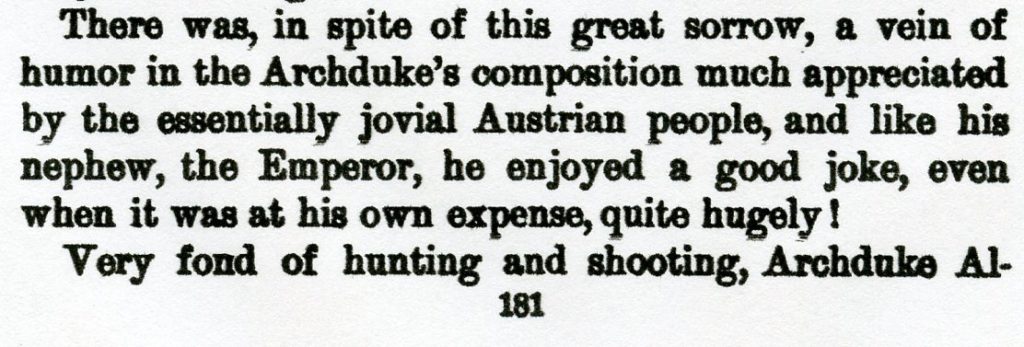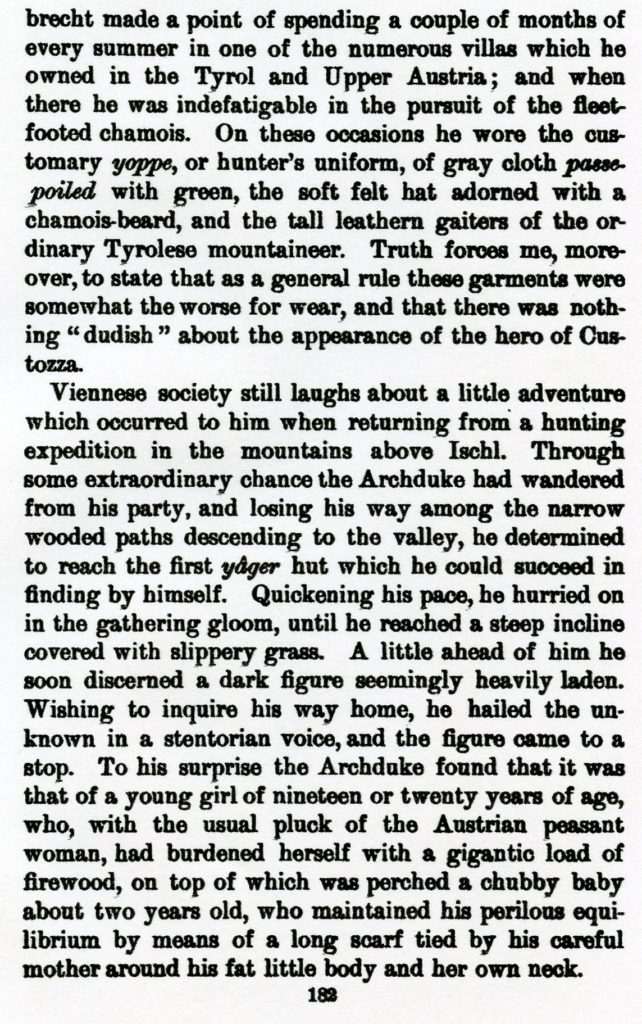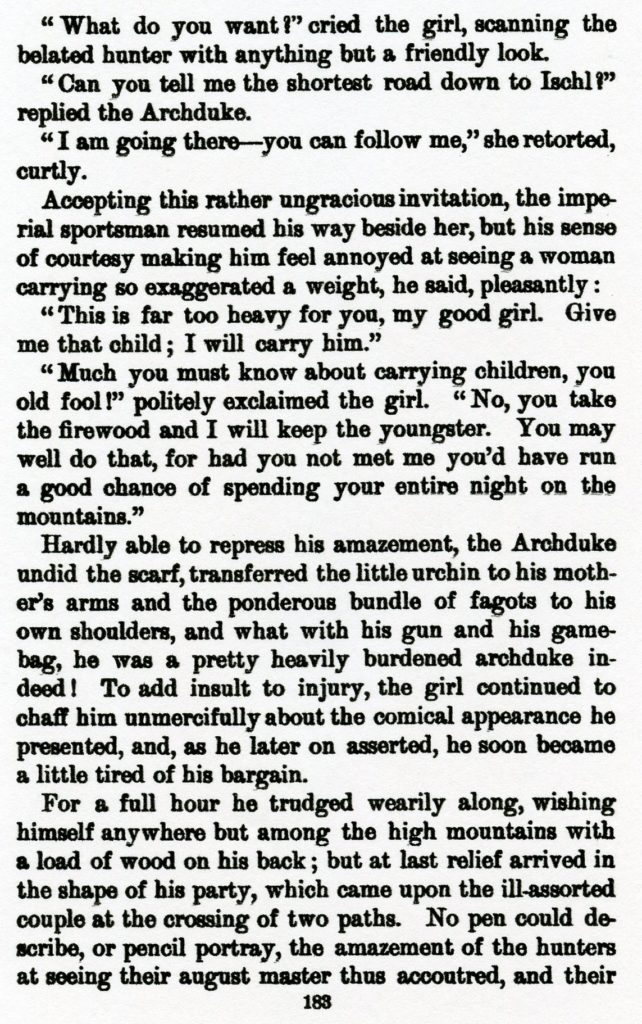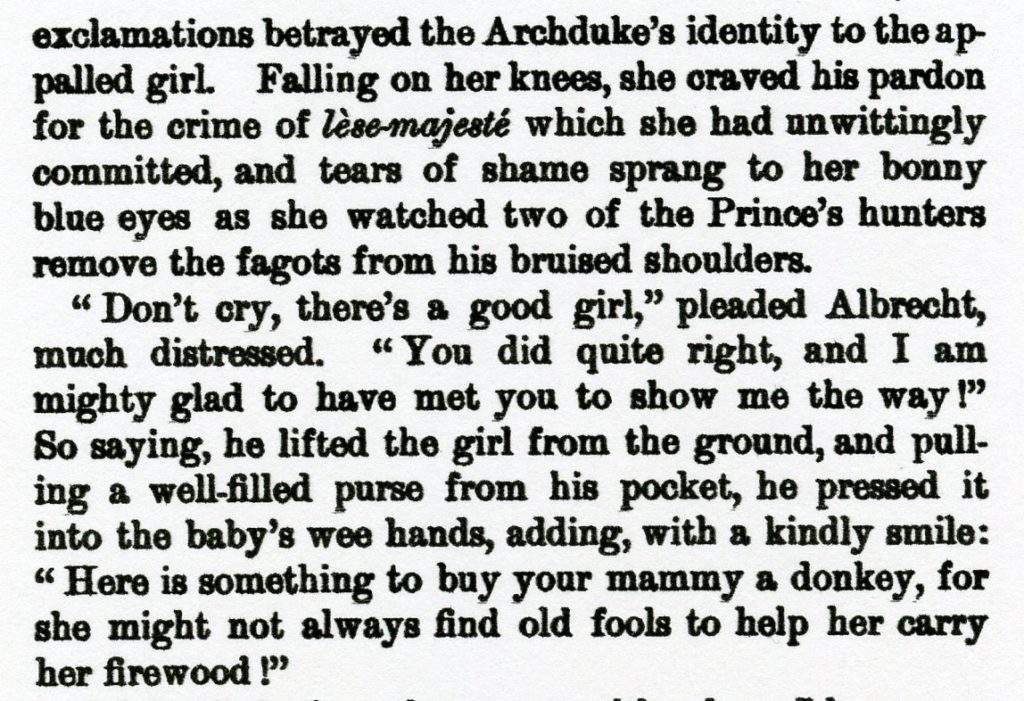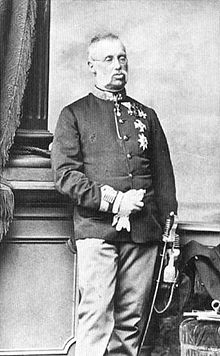By Larry B. Schuknecht
During the late Middle Ages hunting became the passionate sport of the nobility with game and conservation laws enacted which protected the hunted game for noble use. These laws made the wild game animals the property of the nobility, outlawed poaching, and set aside woodlands and wild game habitat for the sole use of the nobility. Strict rules of the hunt developed which regulated how the hunt took place, the conduct of the hunters, how the game was taken and how the animals were handled after the hunt.
Along with the hunts the equipment for hunting used by the nobles became not merely tools but became works of art in themselves. One example of this was the flintlock Jäger Rifle. Many nobles had extensive collections of them with lavish use of stock carving, engraving and etching and Ivory and horn inlays and precious metals. These rifles were actualy seldom used but were often simply eye candy.
The nobles favored the taking of game with large mature antlers and horns and these were mounted to become extravagent trophies of the hunts. These trophies were prominently displayed in the Royal residences with pride.
In the 19th Century after the devastating Napoleonic Wars as the influence of the noble ruling houses began to lose their influence and power hunting became something that the middle class could participate in. The 1848/49 German Revolutions brought about legal changes which gave farmers the right to protect their crops from wildlife predation. With the fall of the Royal houses after World War I the noble hunts became a thing of the past and people who wished to hunt could do so after meeting certain conditions and followed certain rules and laws.
The preceeding is certainly an over simplification of the story of Hunting in Europe and the following items are meant to give the viewer a glimpe into the world of the 18th and 19th Century Royal Hunts and Hunters.
The following story by my friend Hans E. Pfingsten was first published in the Spring 2001 issue of Der Waffenschmied.
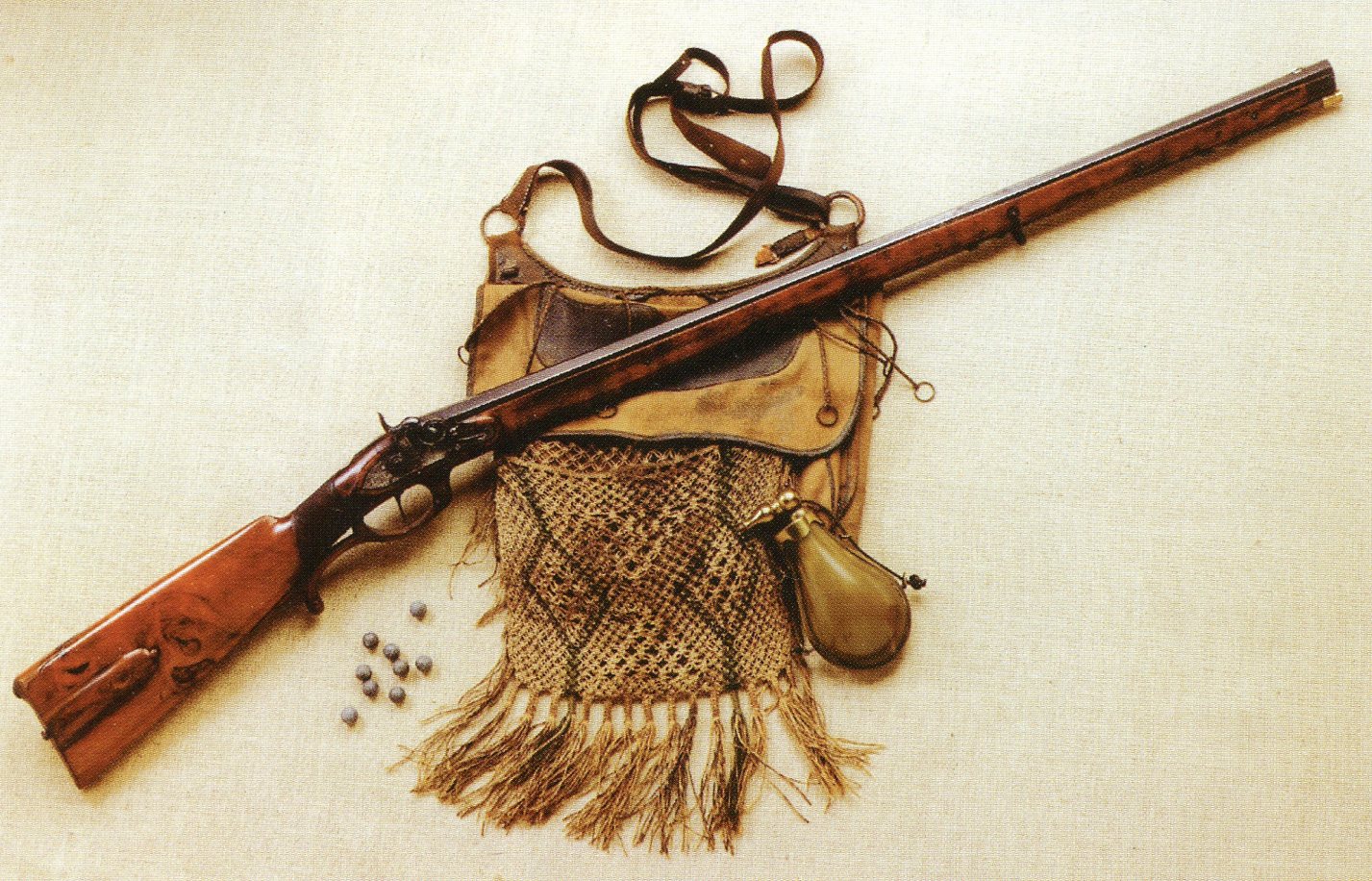
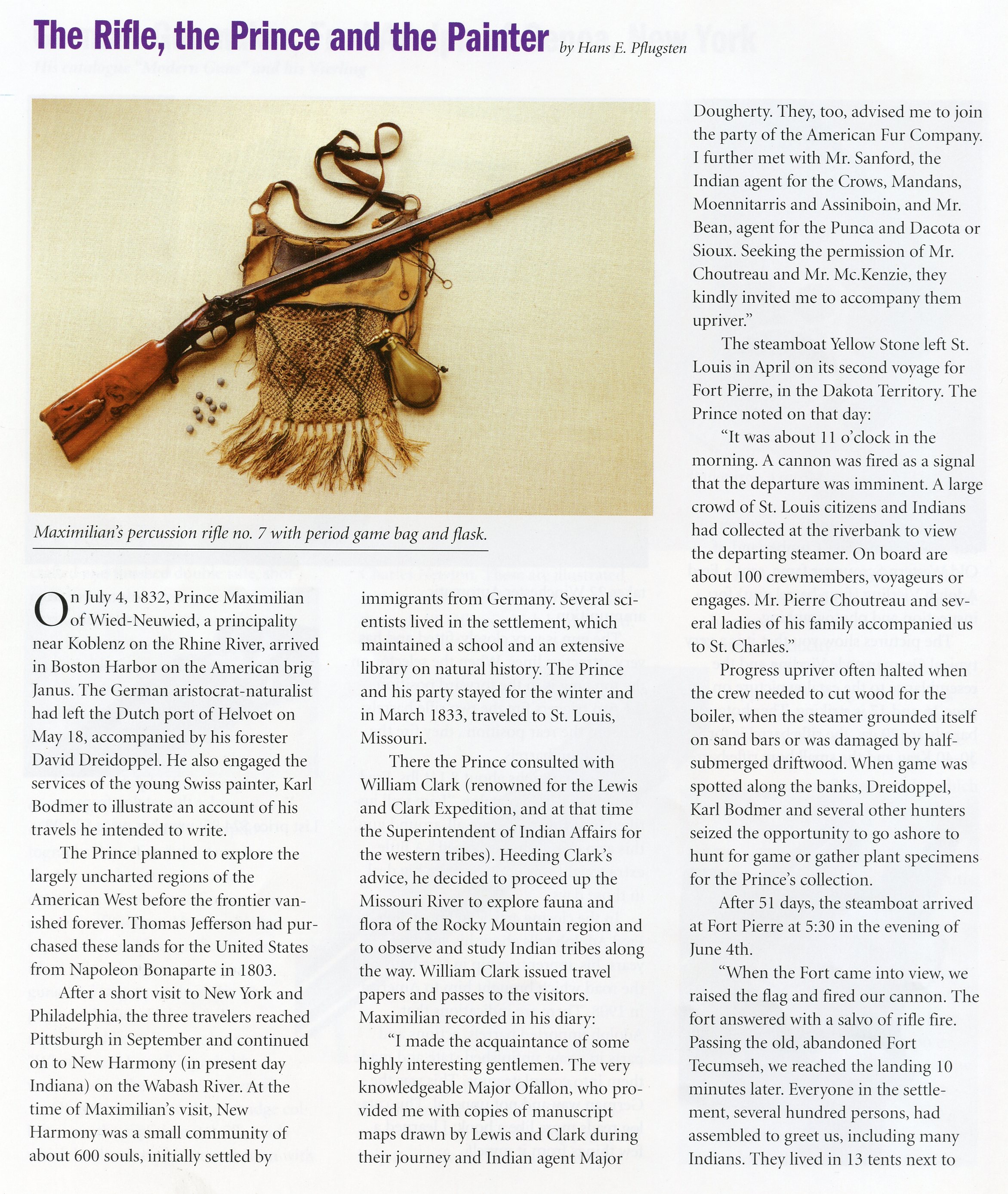
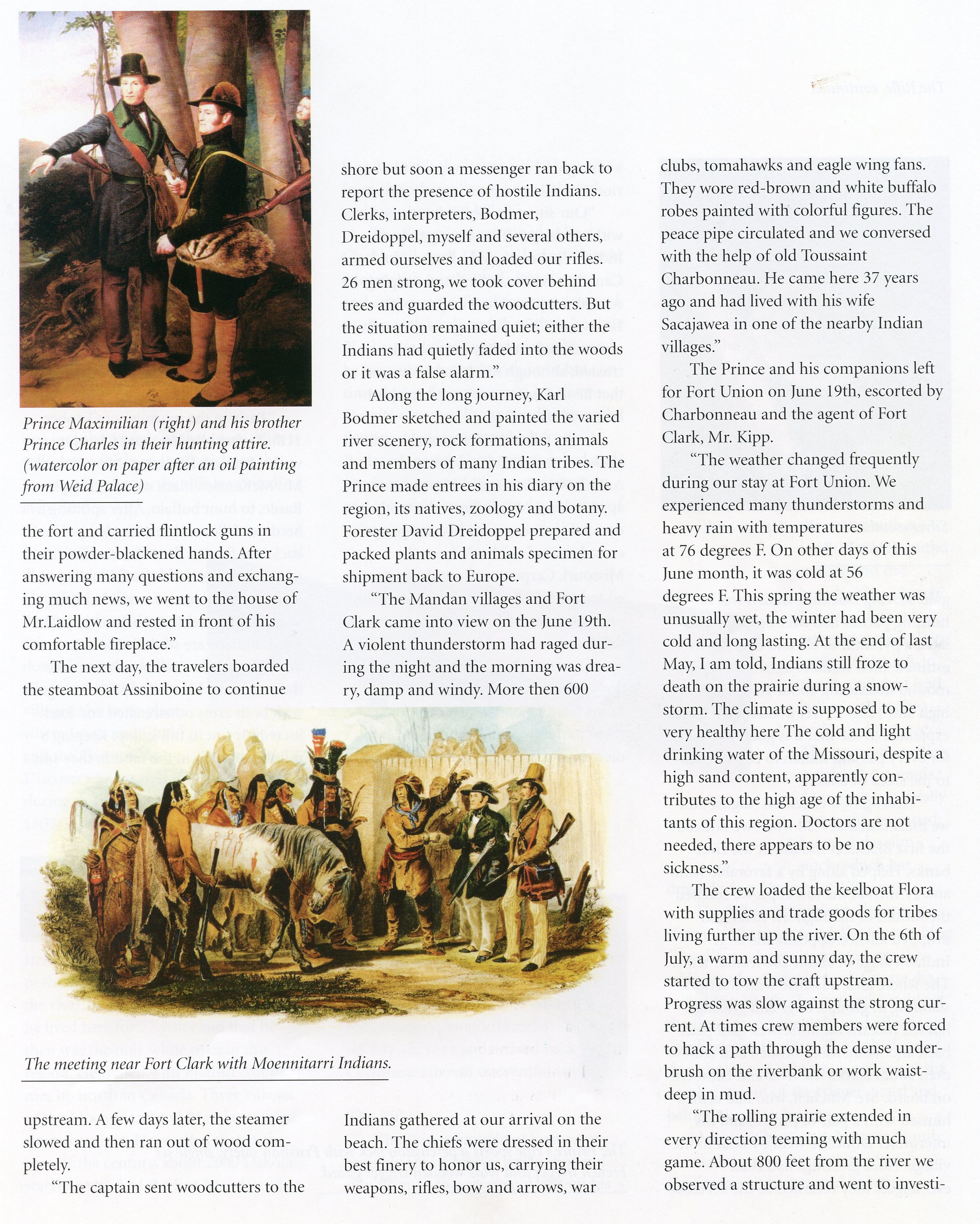
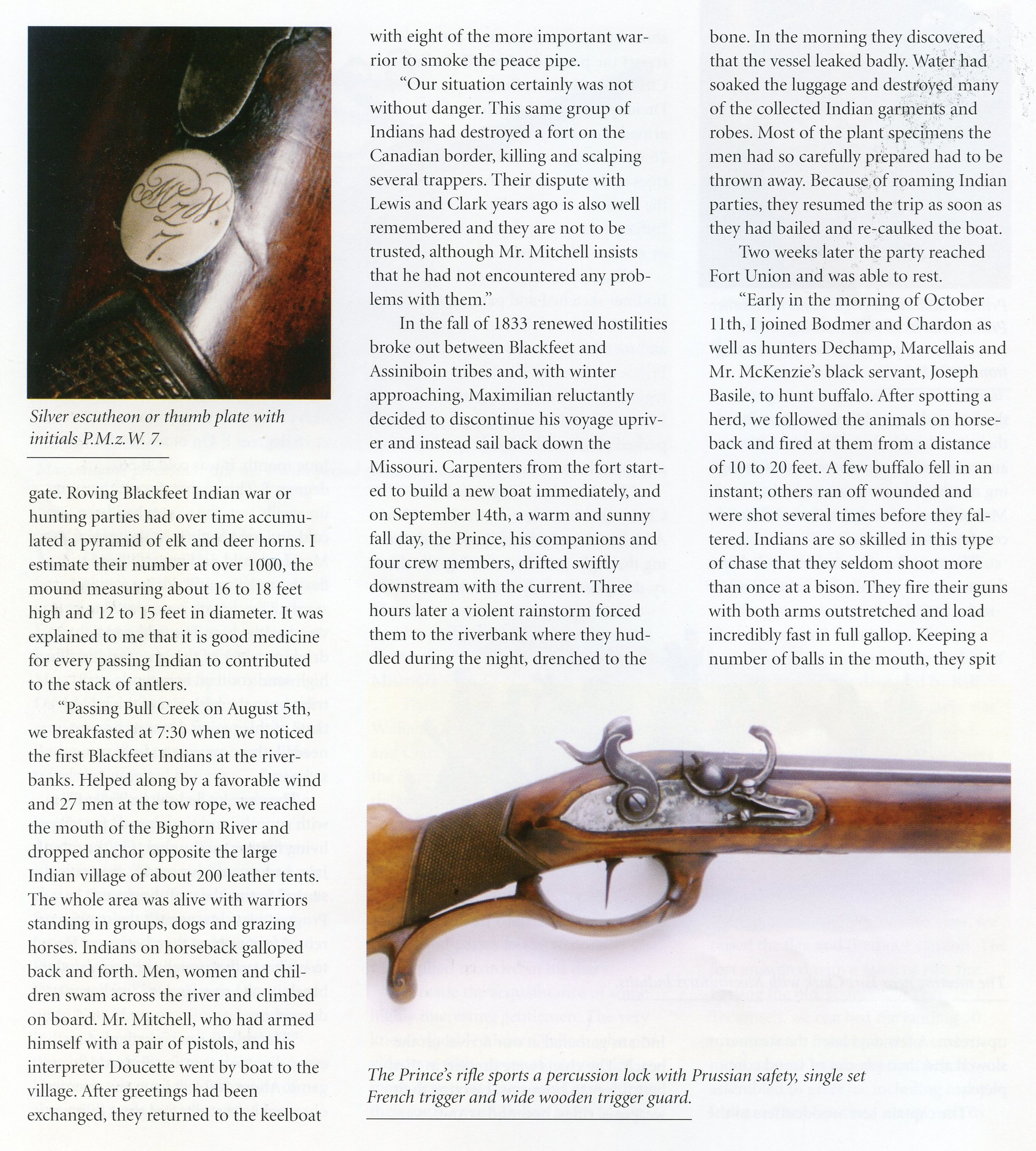
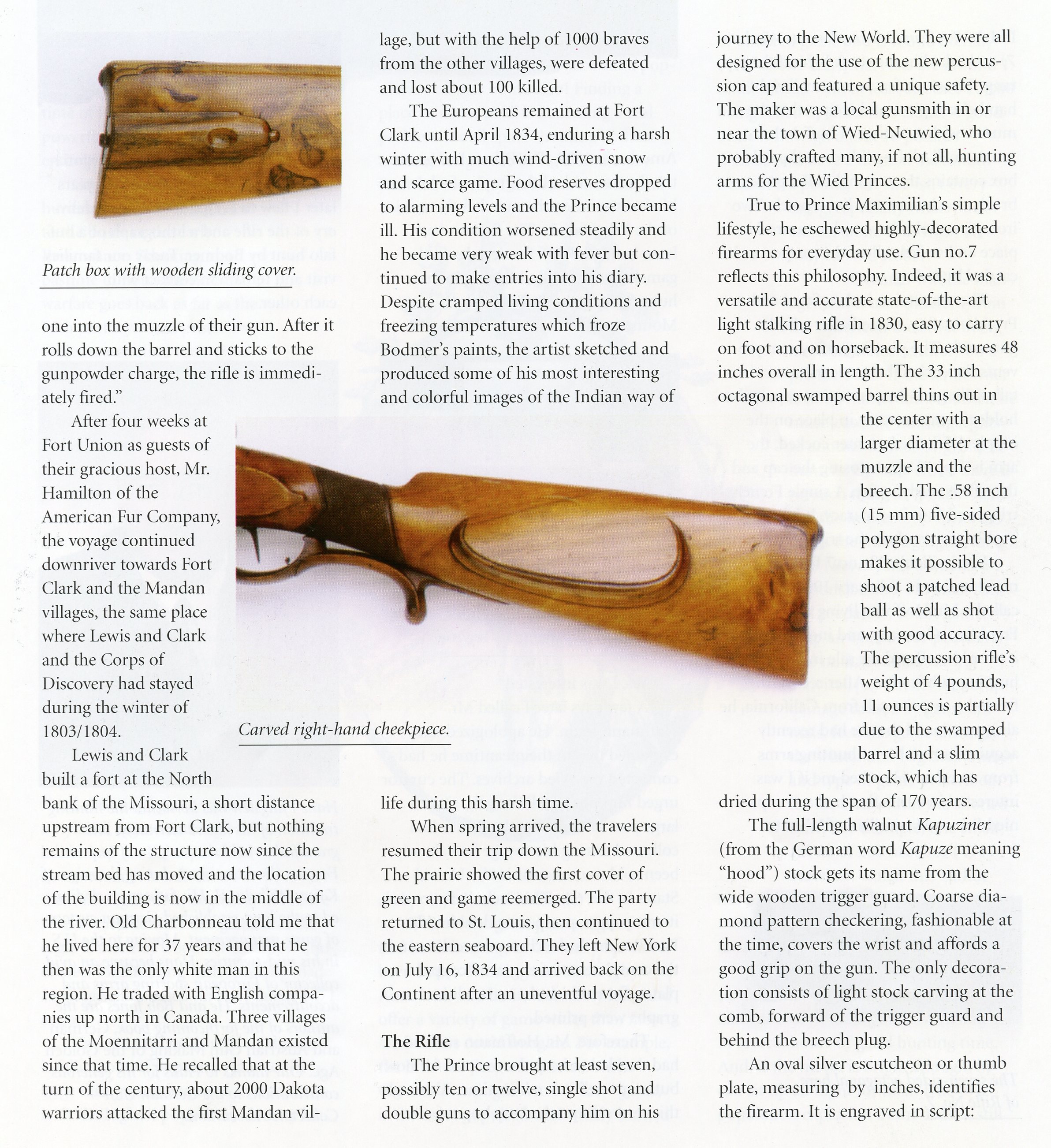
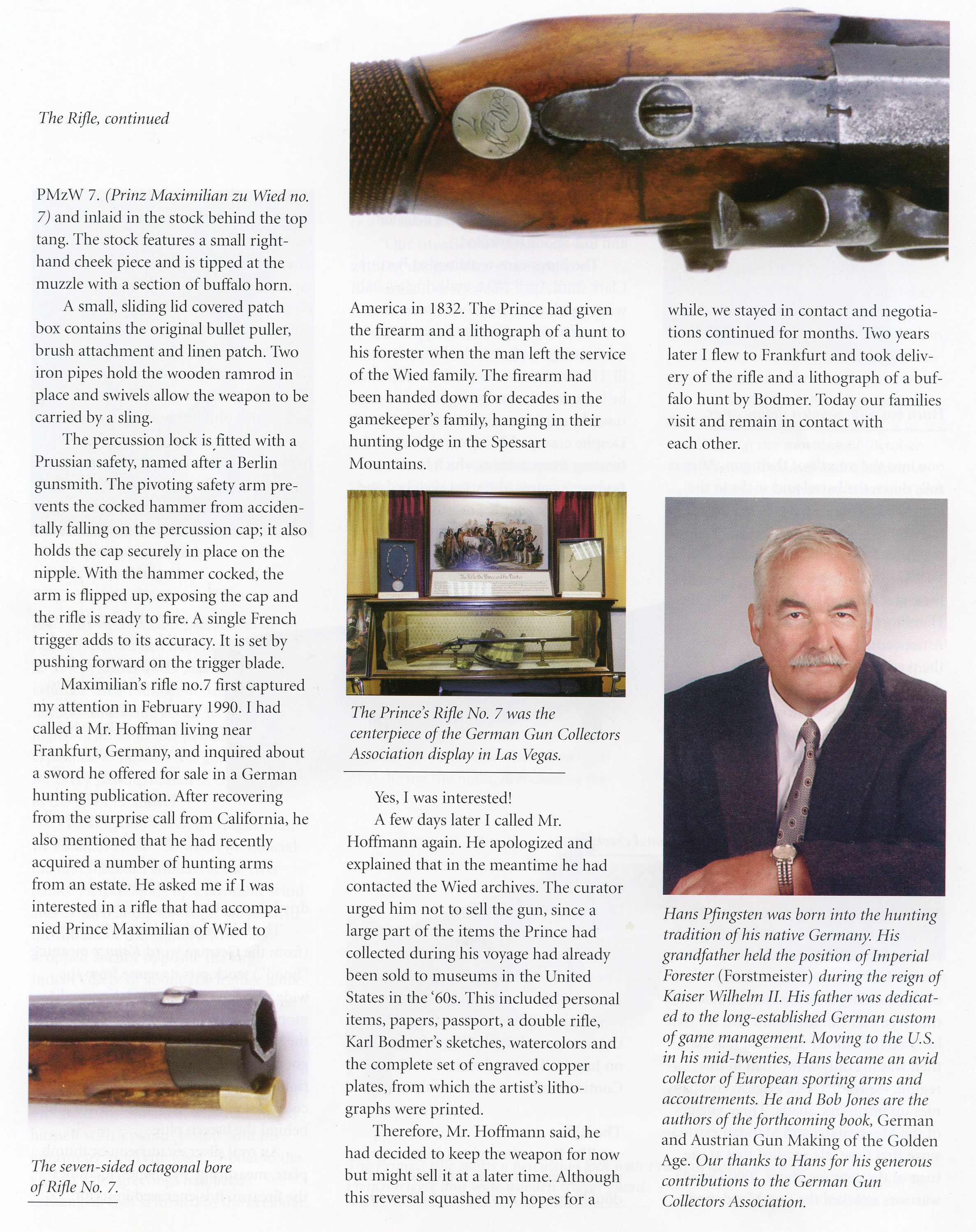
The following three images are from a group of five that were sold by Joh. Sringer’s Erban in Vienna July 2, 2014 and are courtesy of them. They show the Archduke Franz Ferdinand of Austria-Este with his family, his game keepers and his entire entourage.

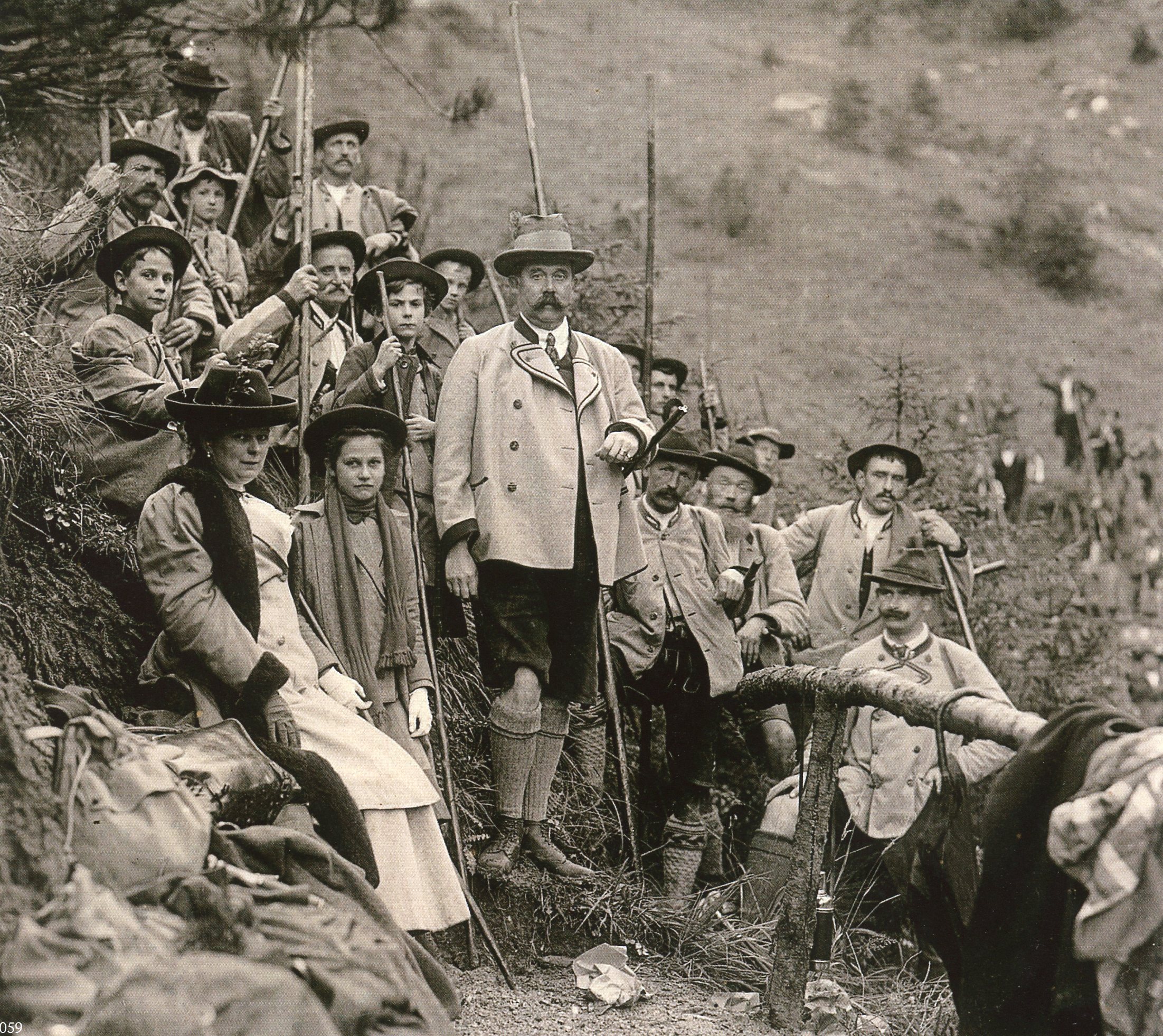
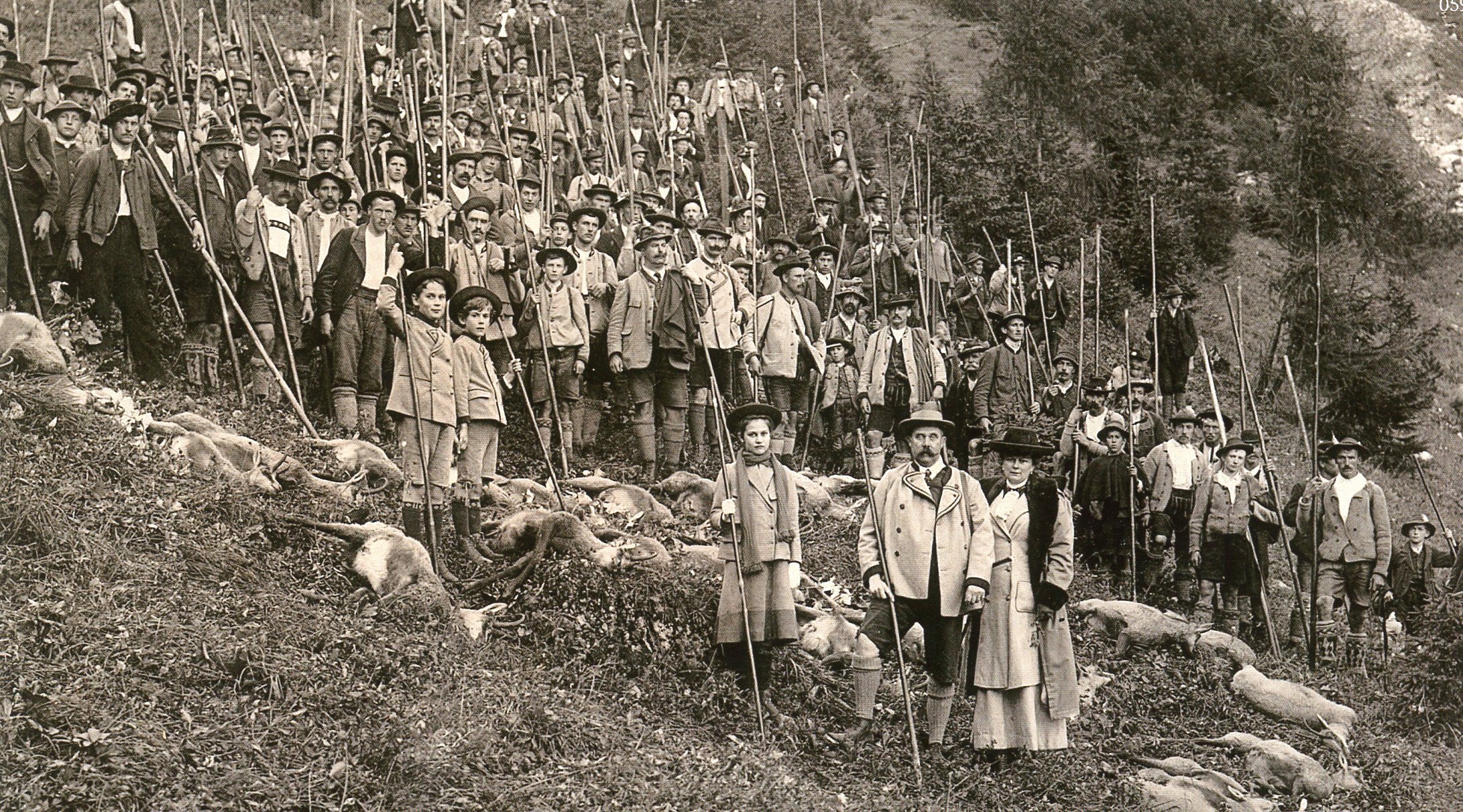
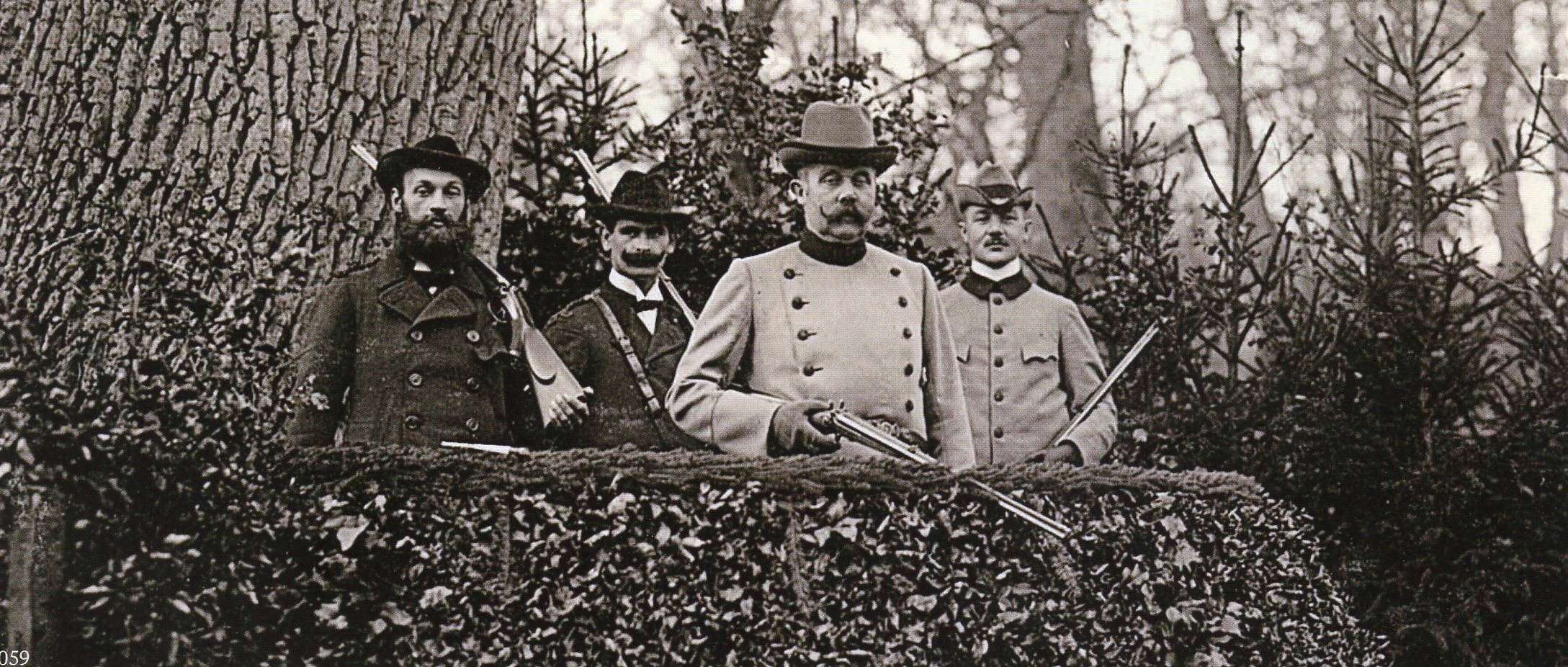
Two of the most famous Royal Hunters were Kaiser Wilhelm II of Germany and Emperor Franz Joseph of Austria. The following images are of the Kaiser Wilhelm and Emperor Franz Joseph with some of their Hunting Trophies sold by the Rock Island Auction Company on April 29th, 30th and May 1st 2016 and on Dec. 1st, 2nd and 3rd. of 2017.
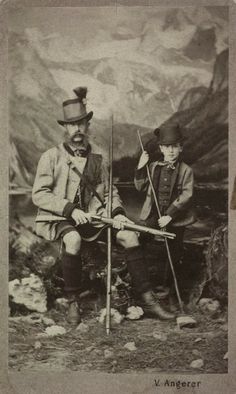
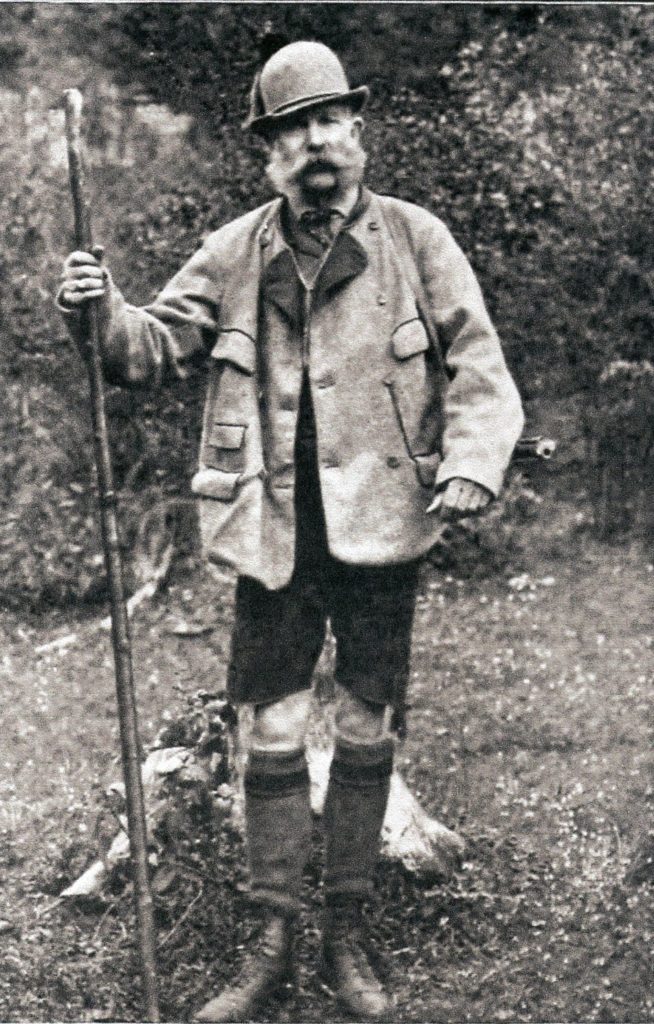
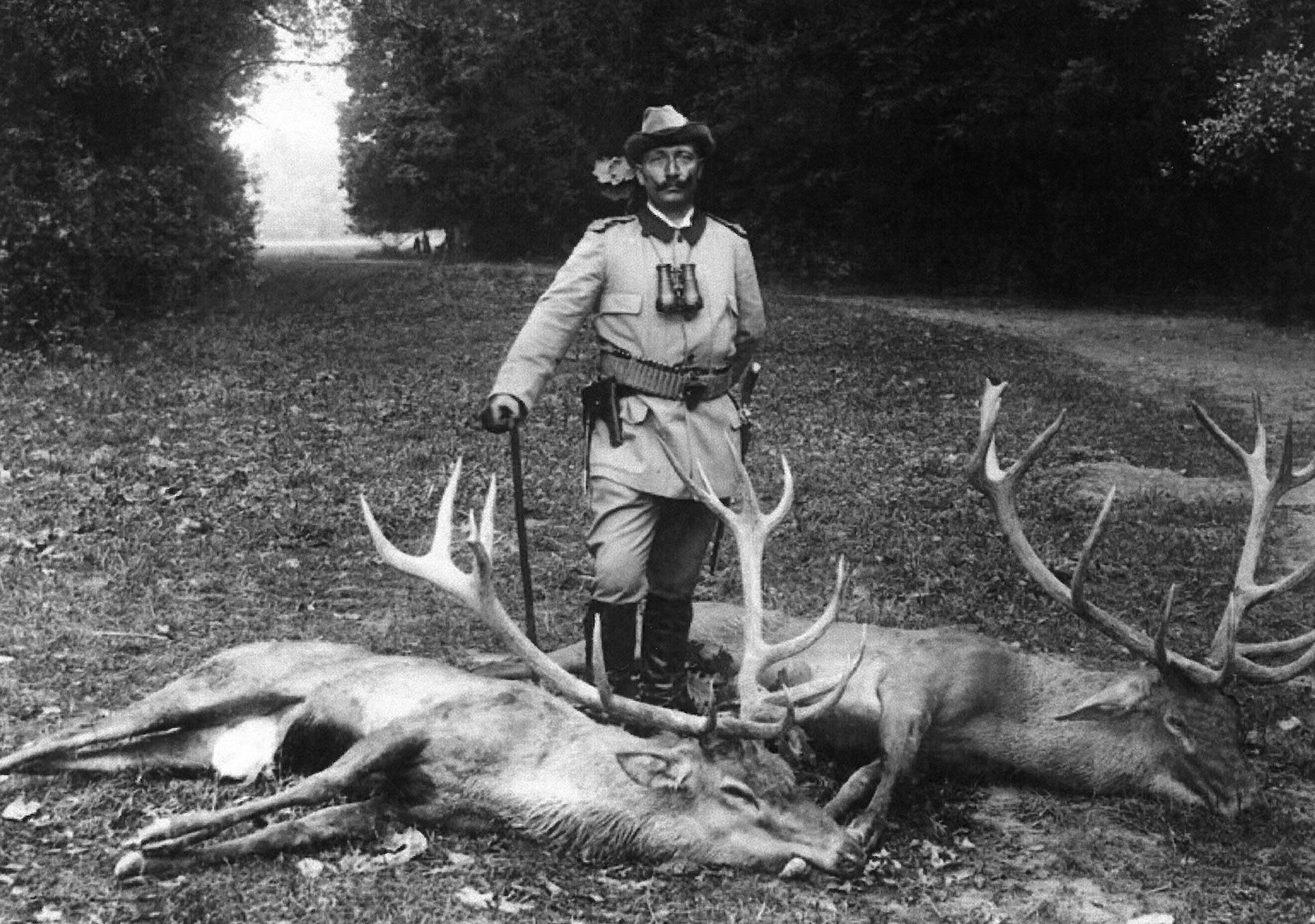
Kaiser Wilhelm II of Germany
To view an excellent article about The Hunting Guns of Kaiser Wilhelm II click here

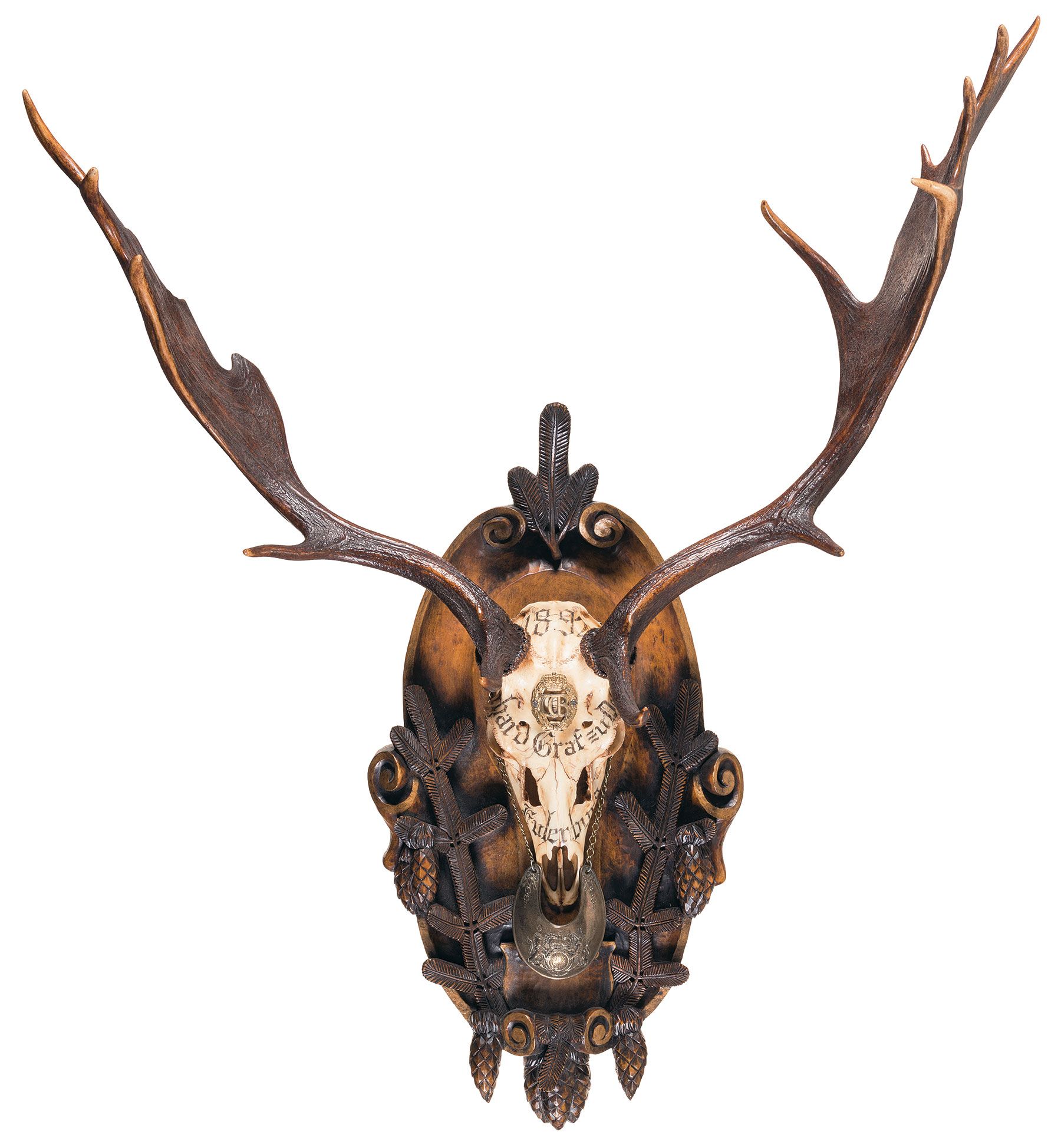






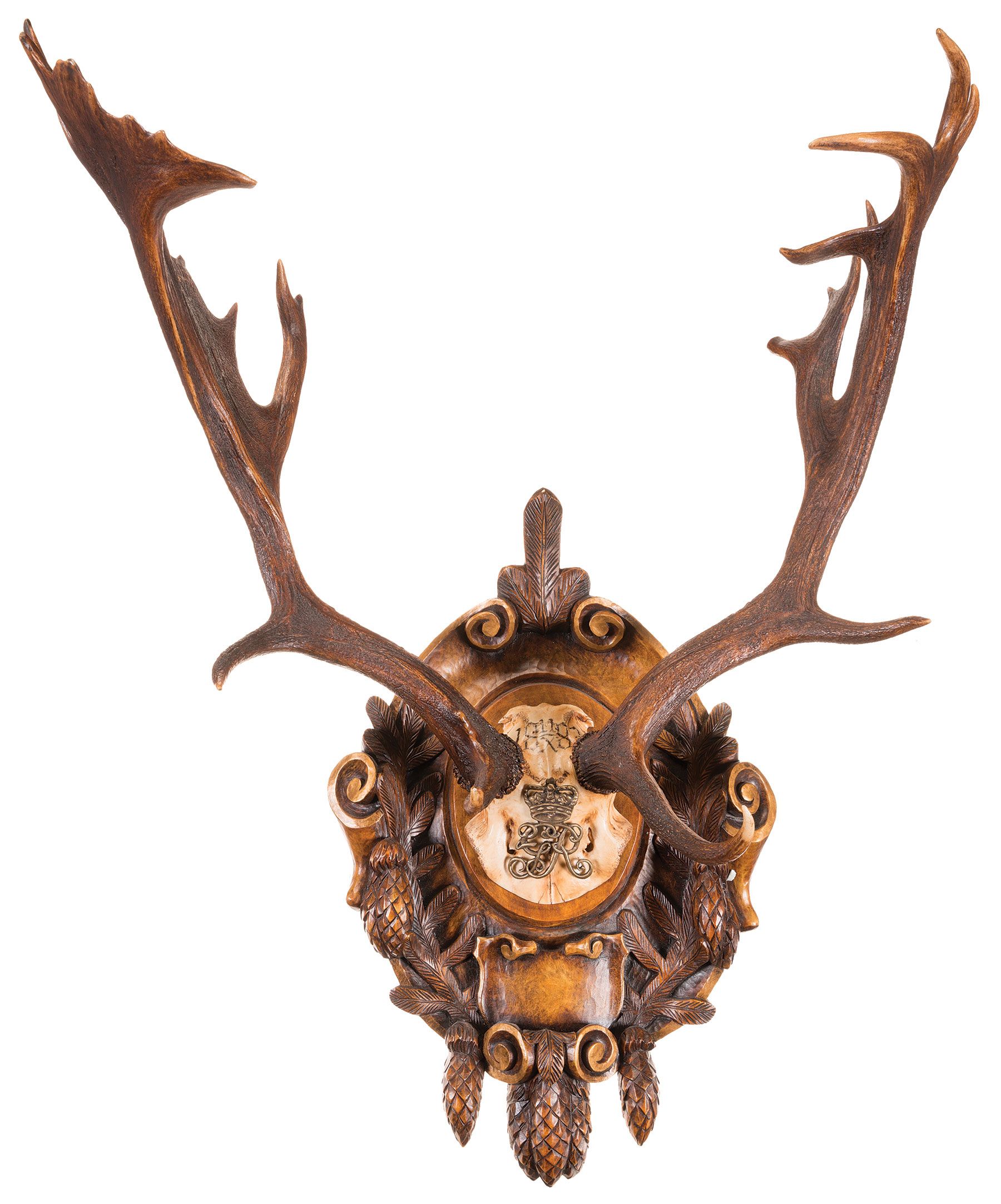
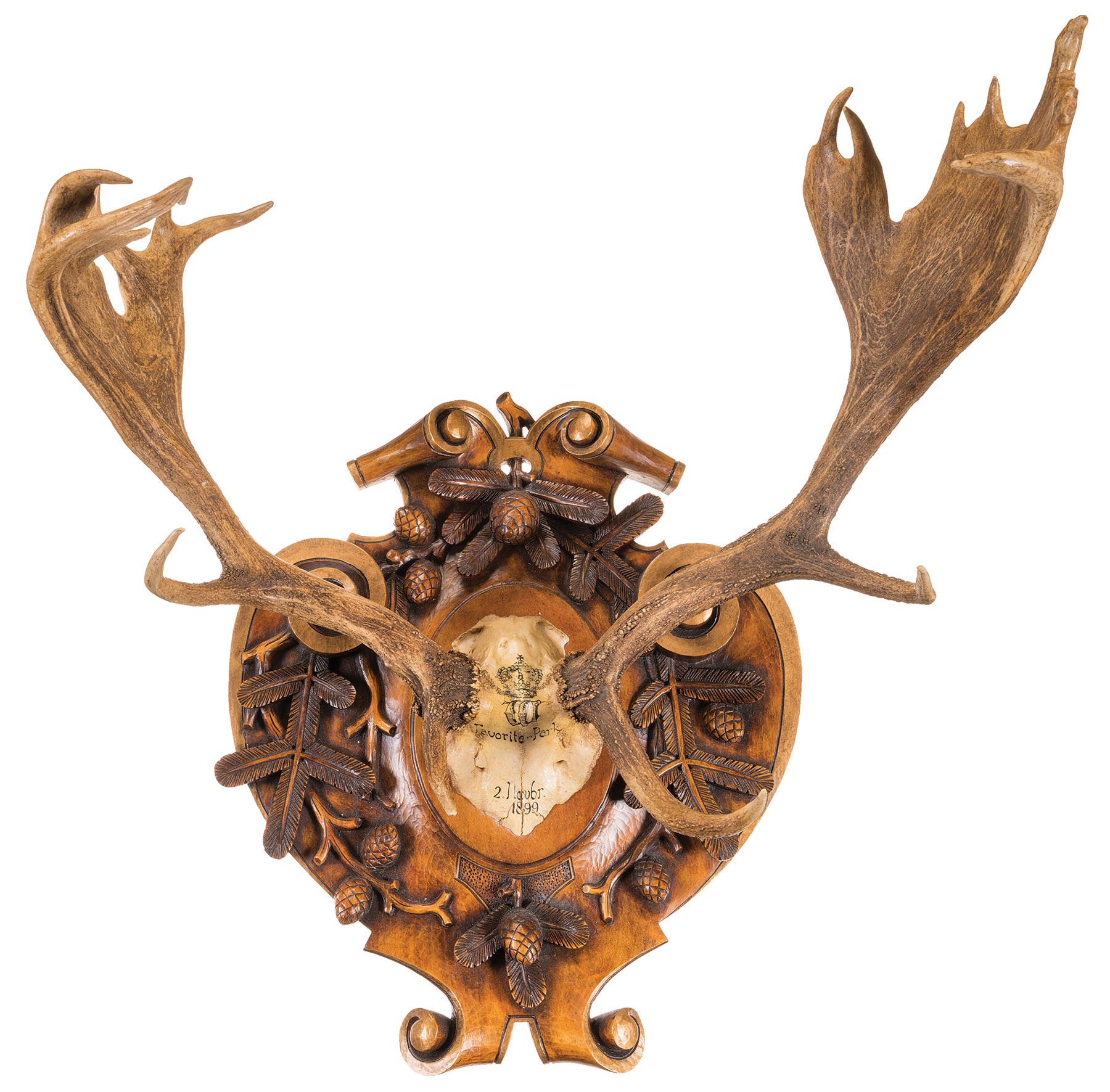




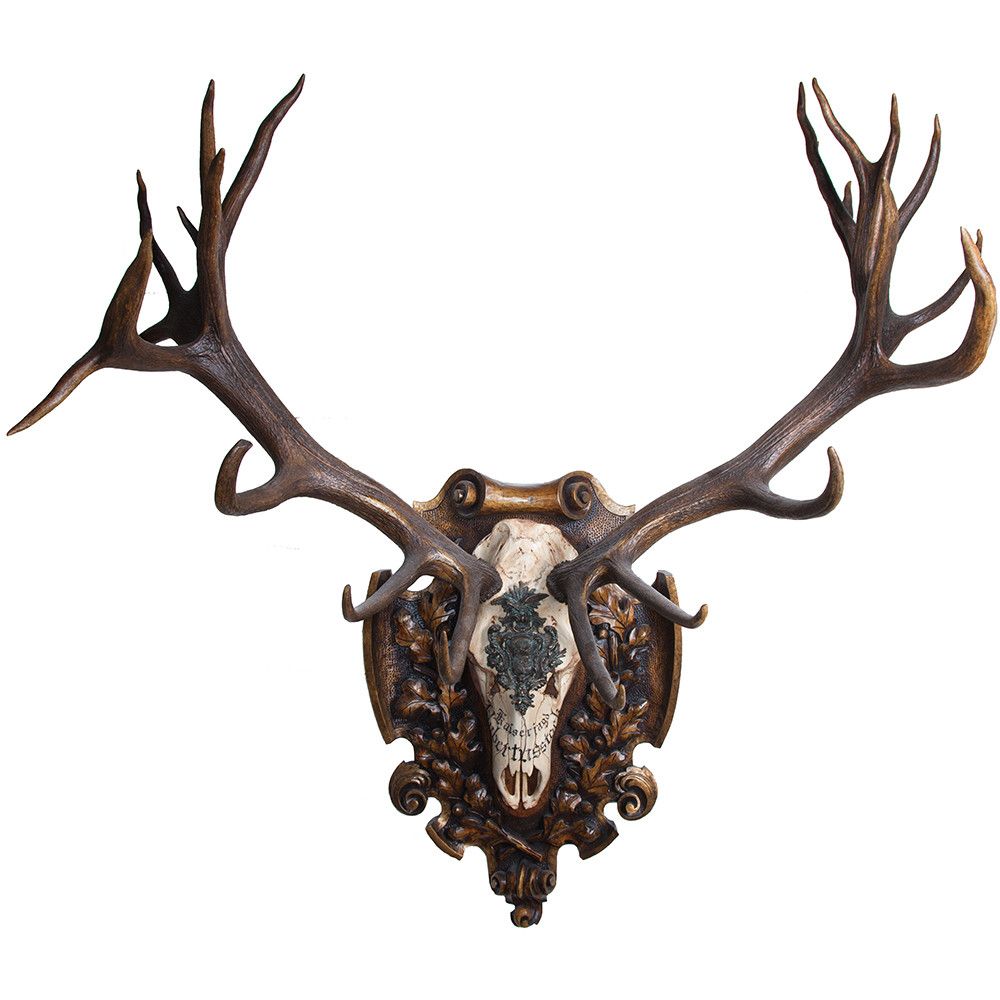
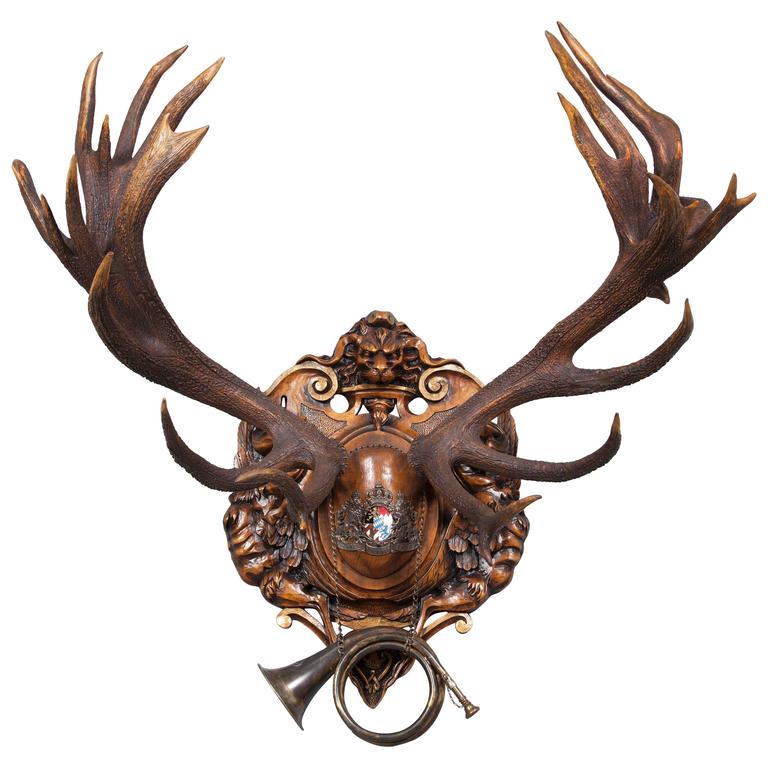
Our good friend Fredrik Fránzen of Sweden sent us the following pictures of Swedish nobility and some of their guns.
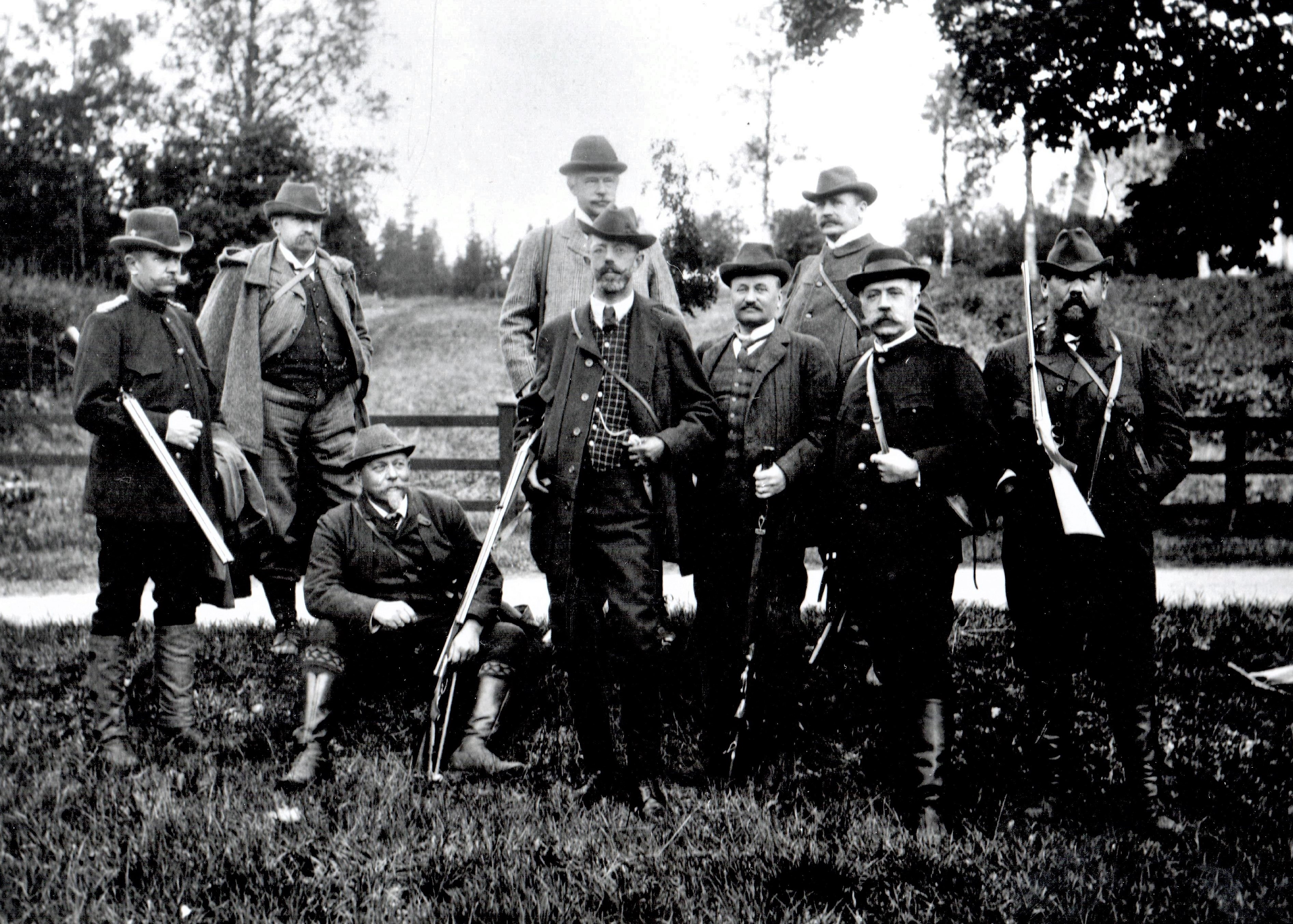
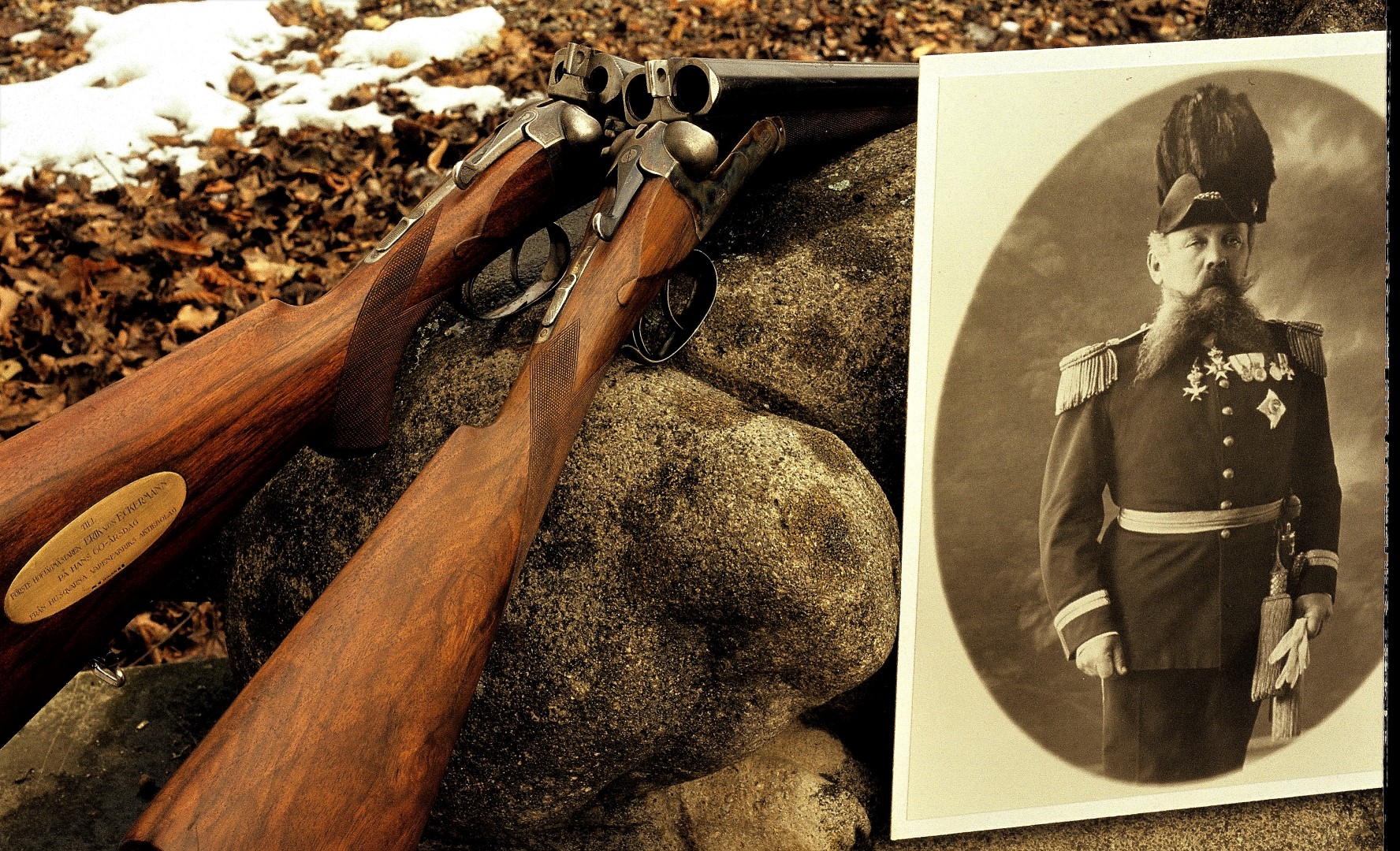
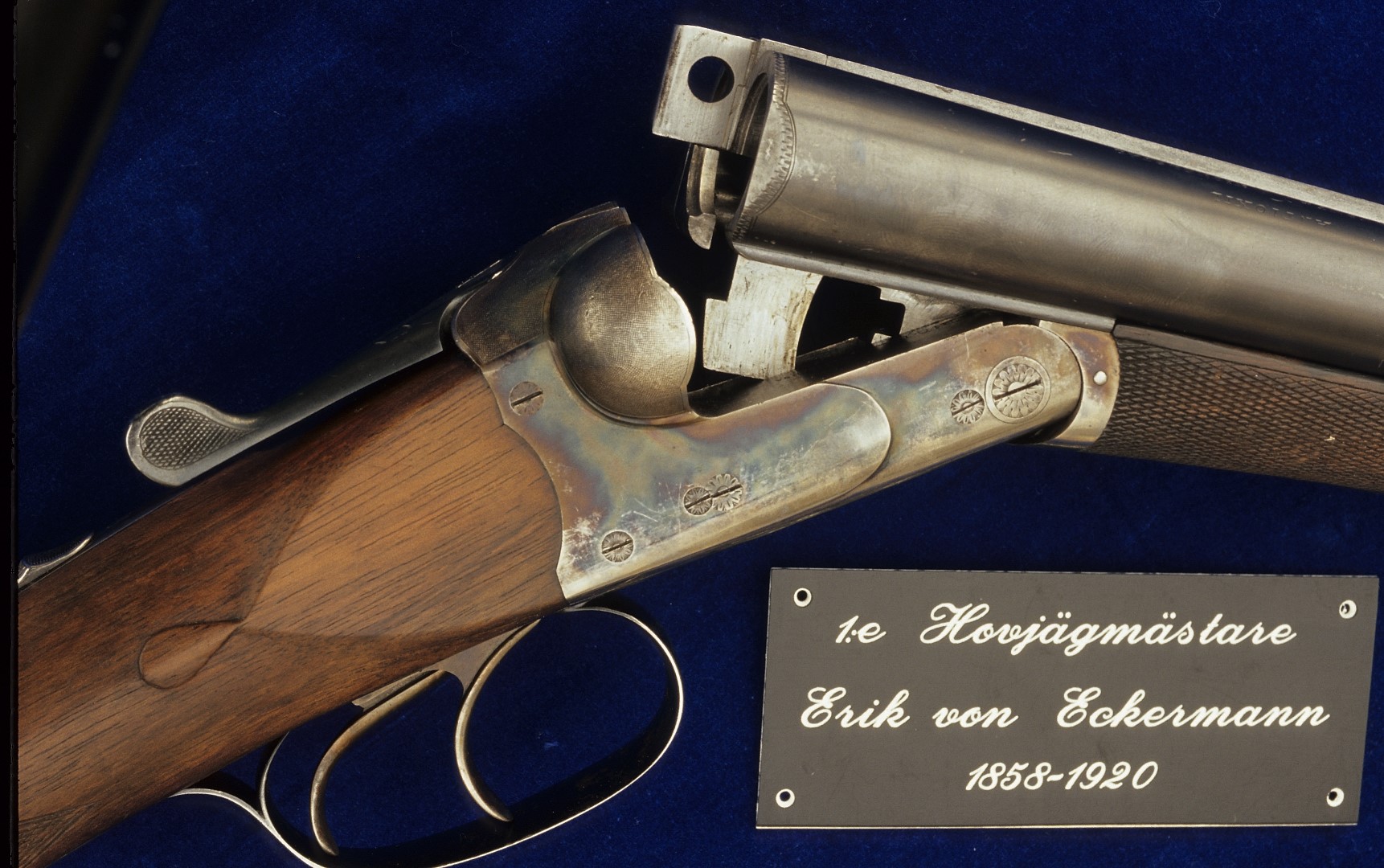
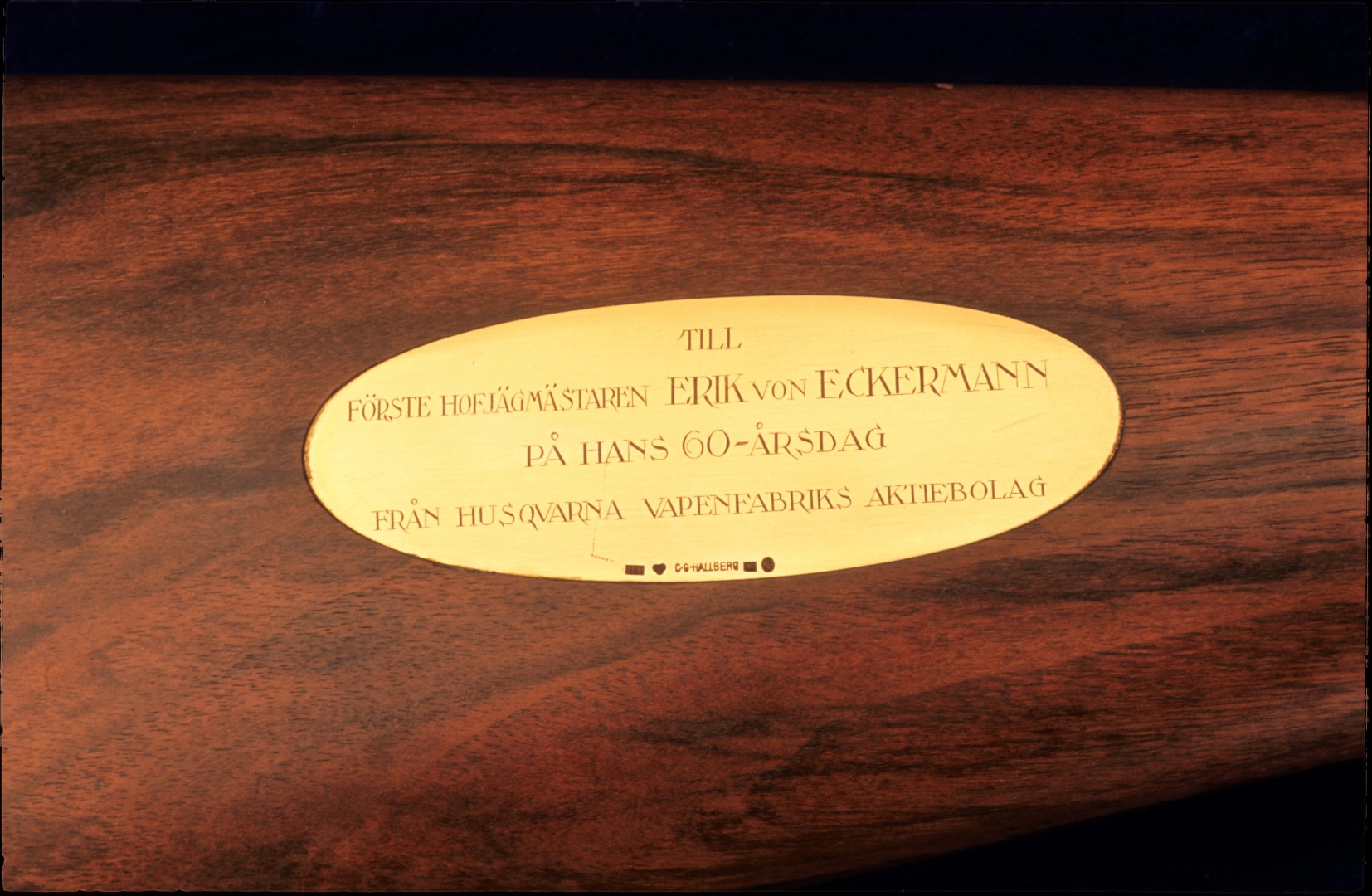
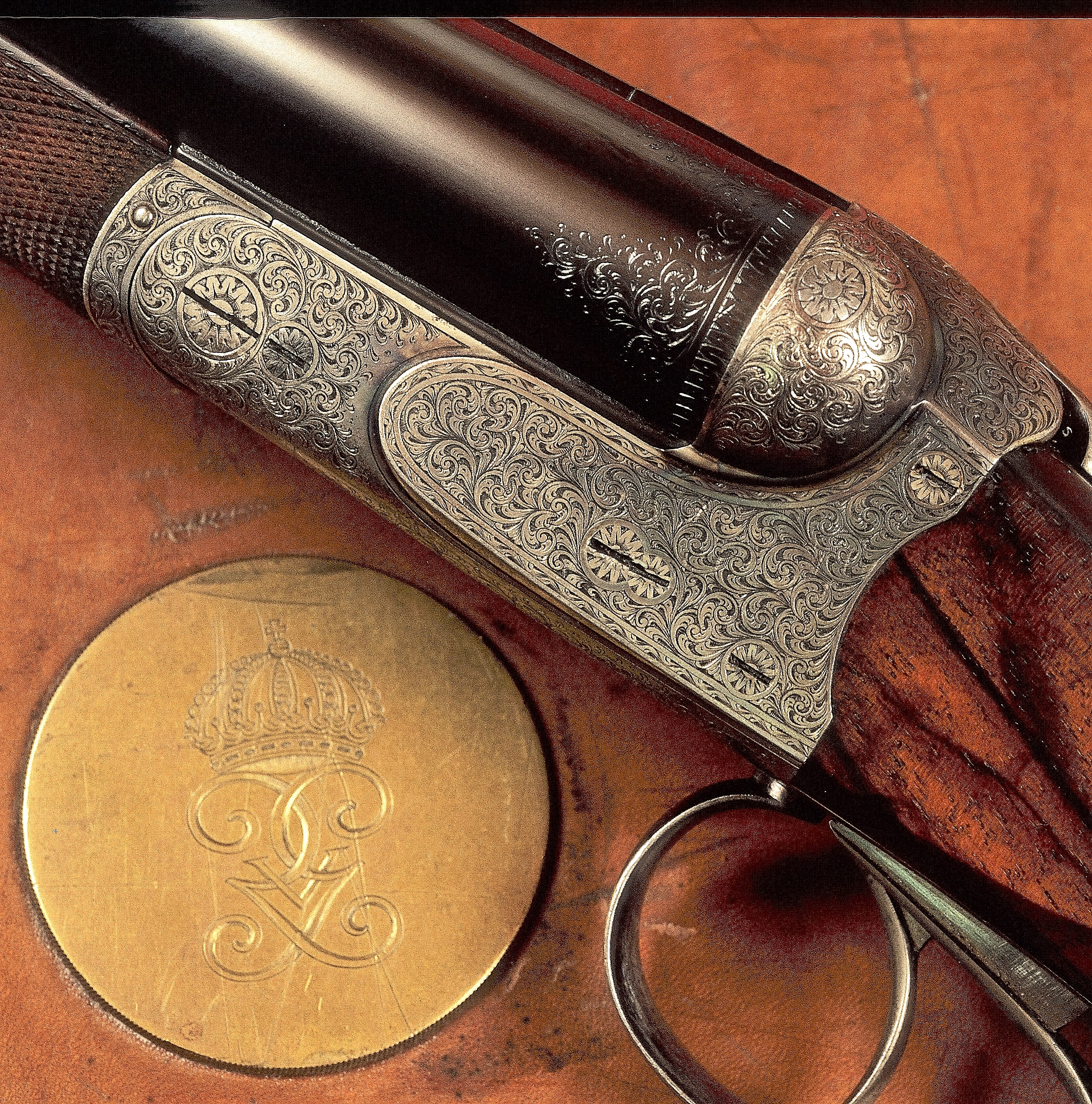
The following three pictures are of a W. Foerster of Berlin double once owned the the King of Sweden.
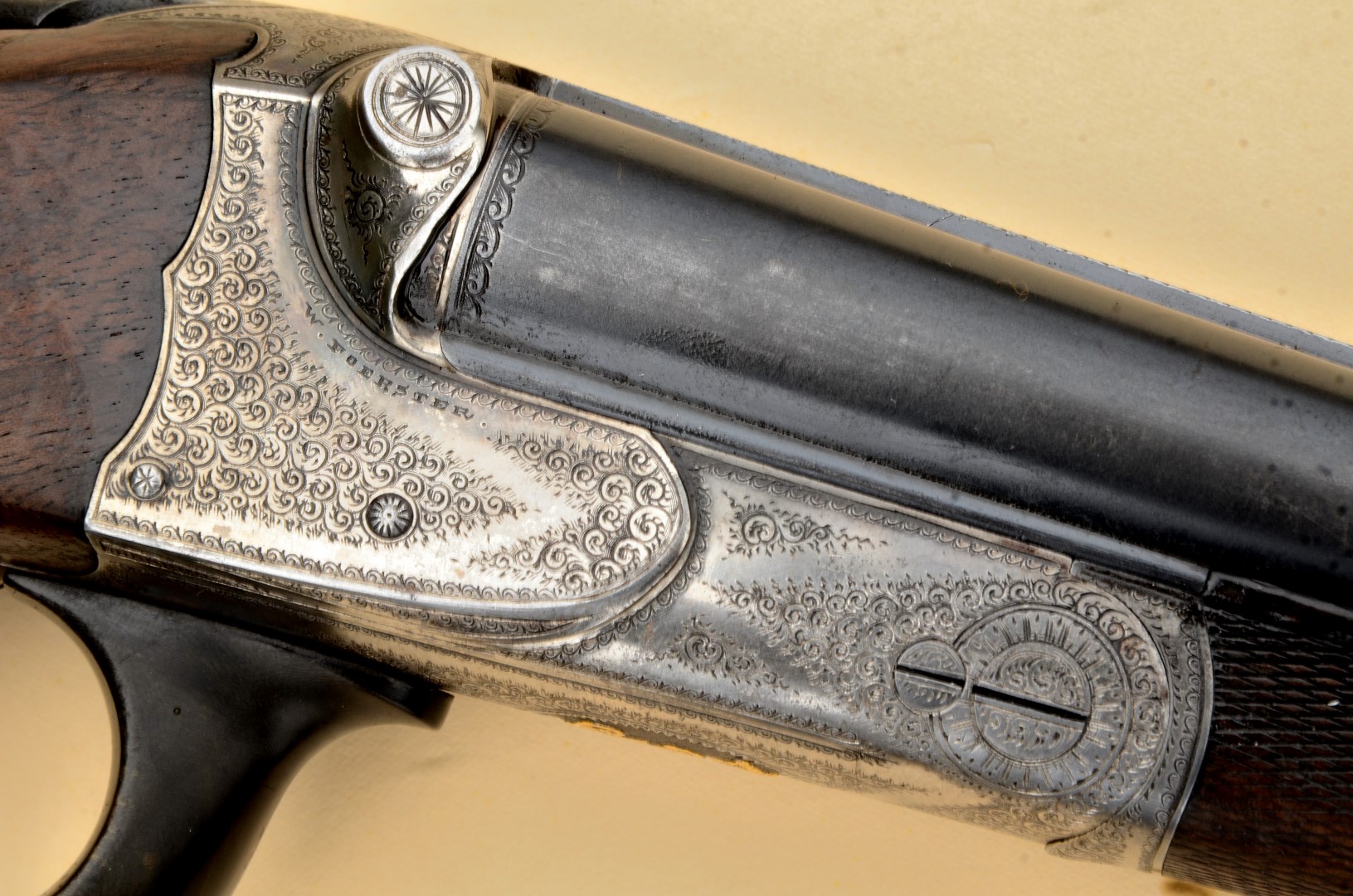
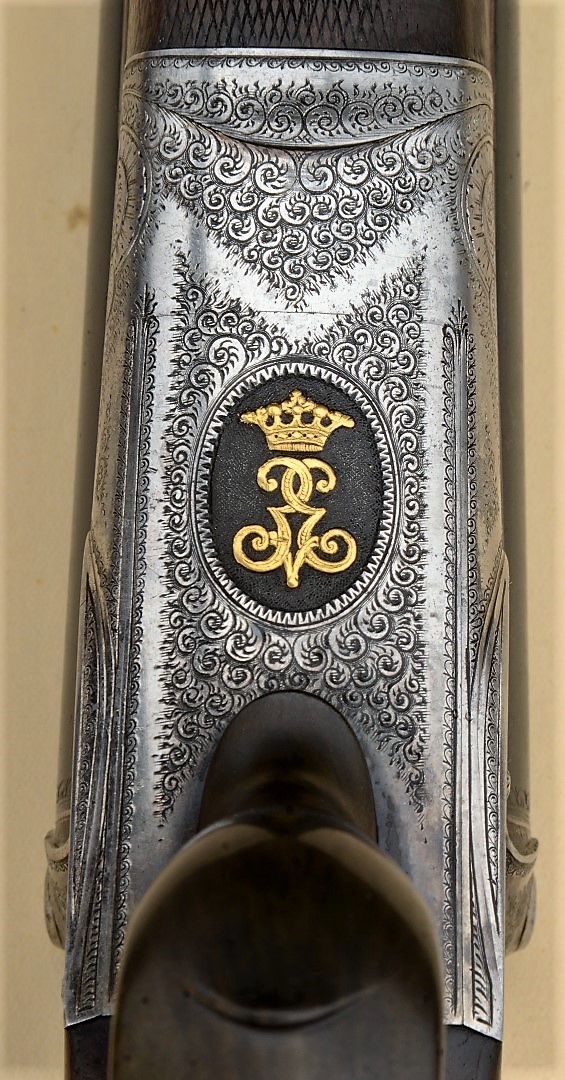
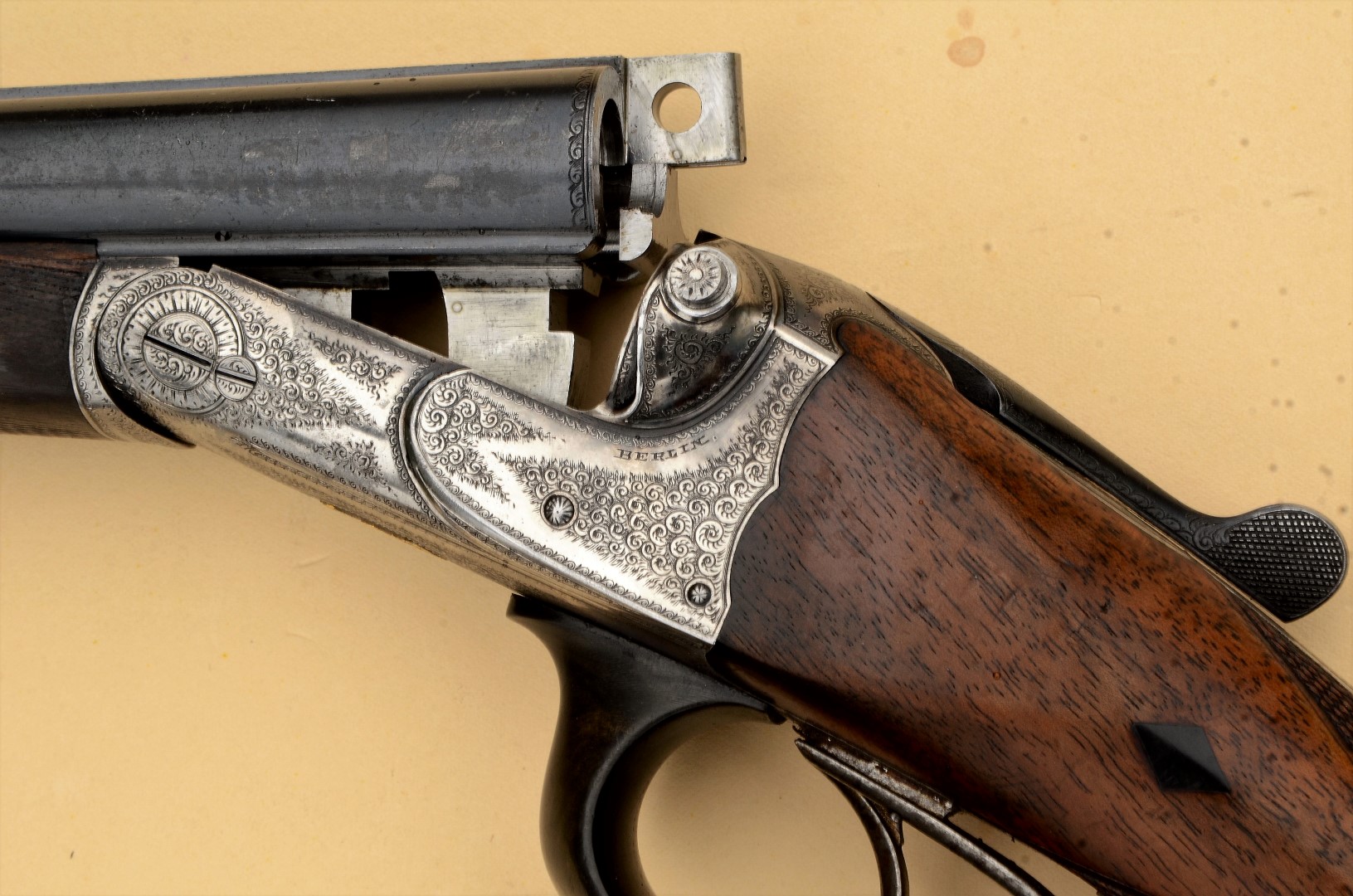
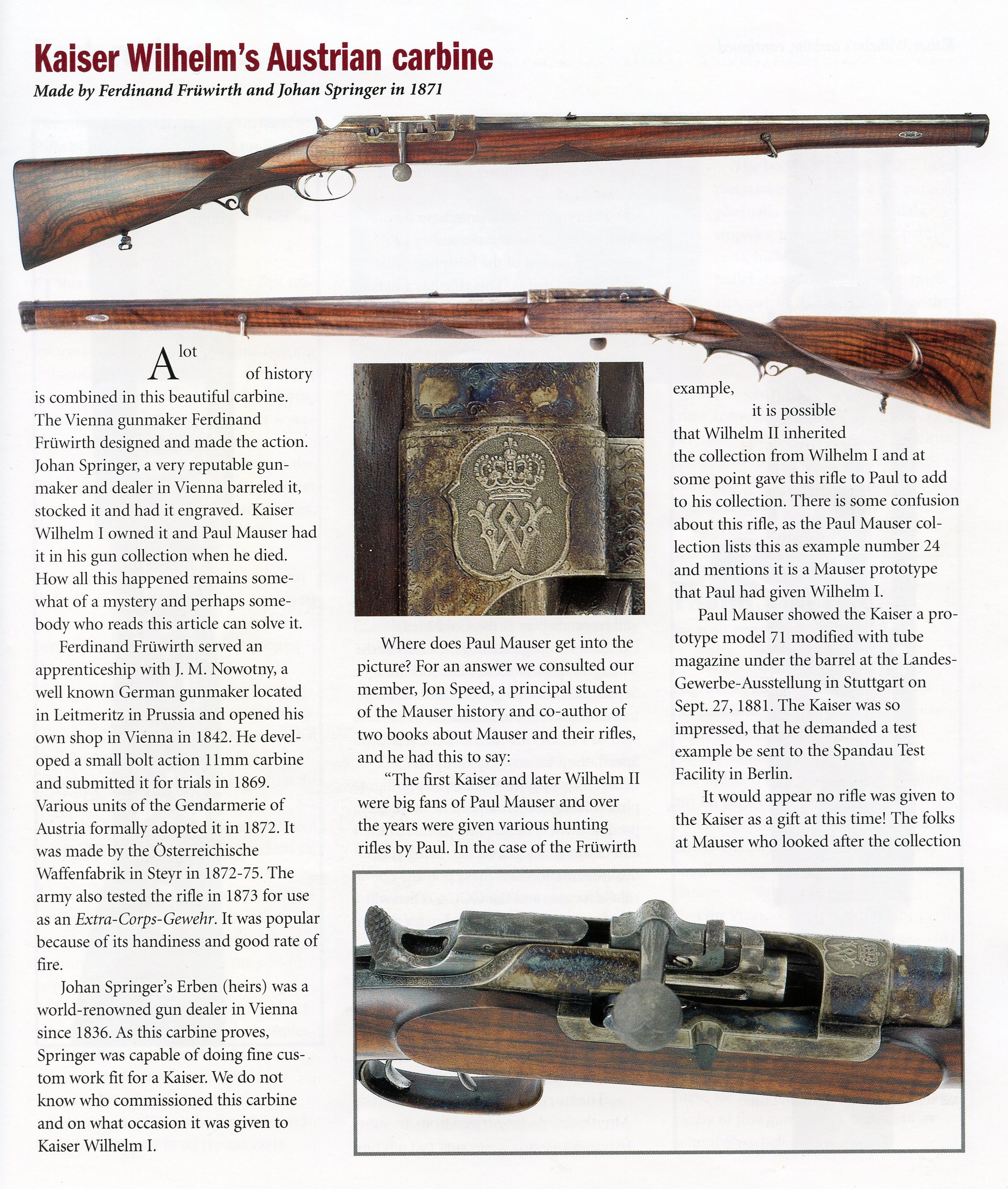
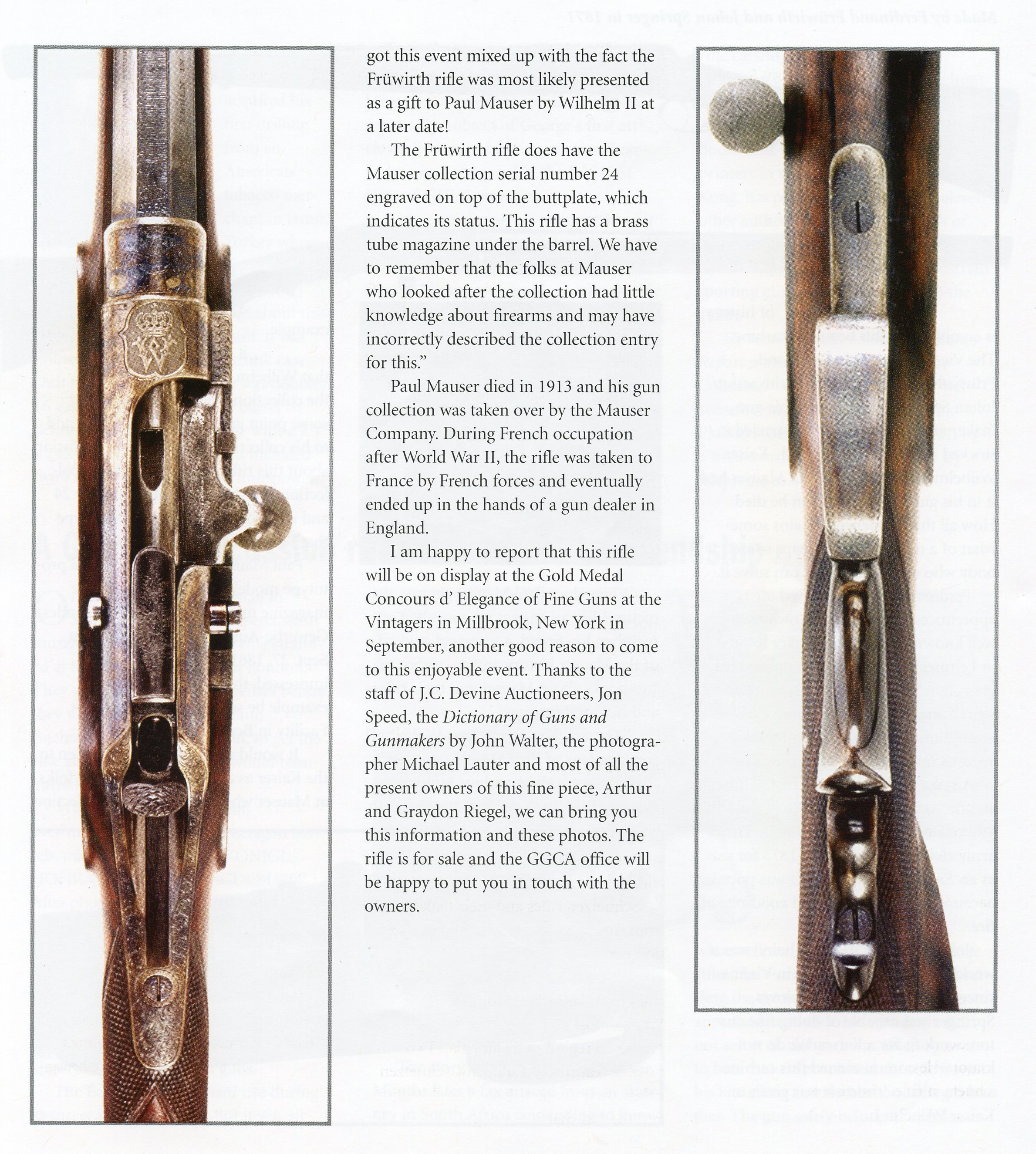
On May 2, 2014 the auction house Rock Island Auction Co. sold a rifle made for Kaiser Wilhelm II by Johann Springer Erban in Vienna. The rifle is an 11mm with a 24 inch full octagon barrel. The receiver bears a deep relief engraved monagram of the Kaiser. The rifle has double set triggers, and horn forend cap and trigger guard extension. The bolt bears a number 1120, the butt plate a number 6453 and the top tanng a number 24. We thank the Rock Island Auction Co. for allowing us to use these images.



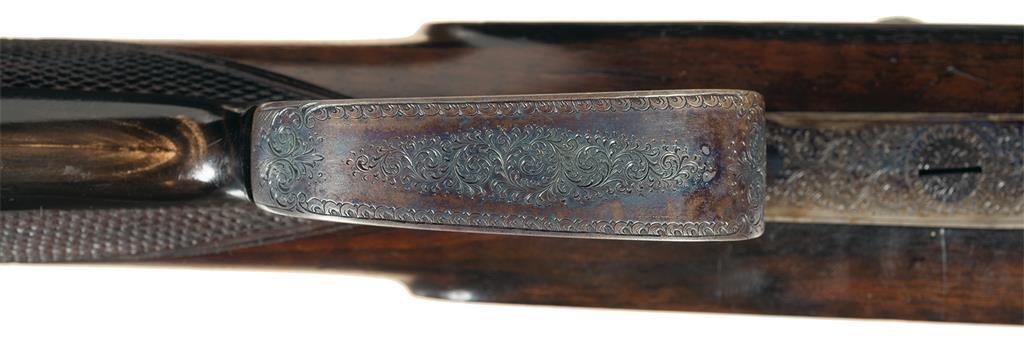
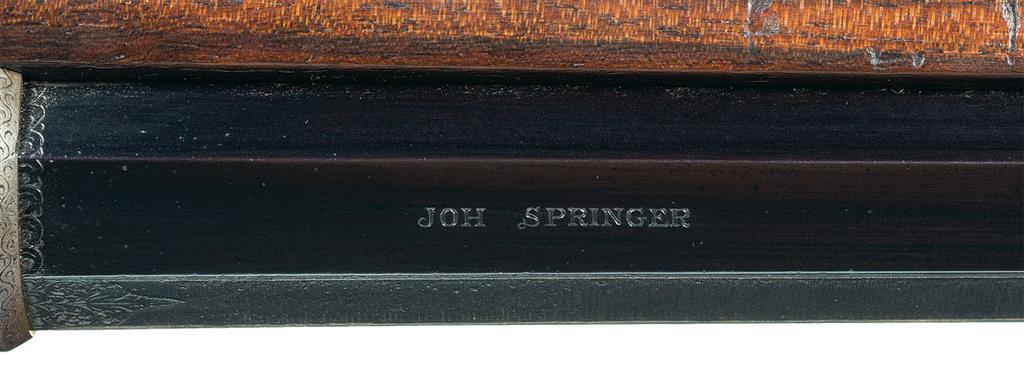
In 1901 the German author Fritz Skowronnek wrote and published a book Die Jagd (The Hunt) which included chapters about the German wild game, hunting guns, and famous hunters, etc. Here I have included chapters V titled “Der Jagdherr” and chapter VI “Hirsh und Sau” which include images of Kaiser Wilhelm II and Emperor Franz Joseph of Austria along with images of the Kaisers hunting lodges and wild game.
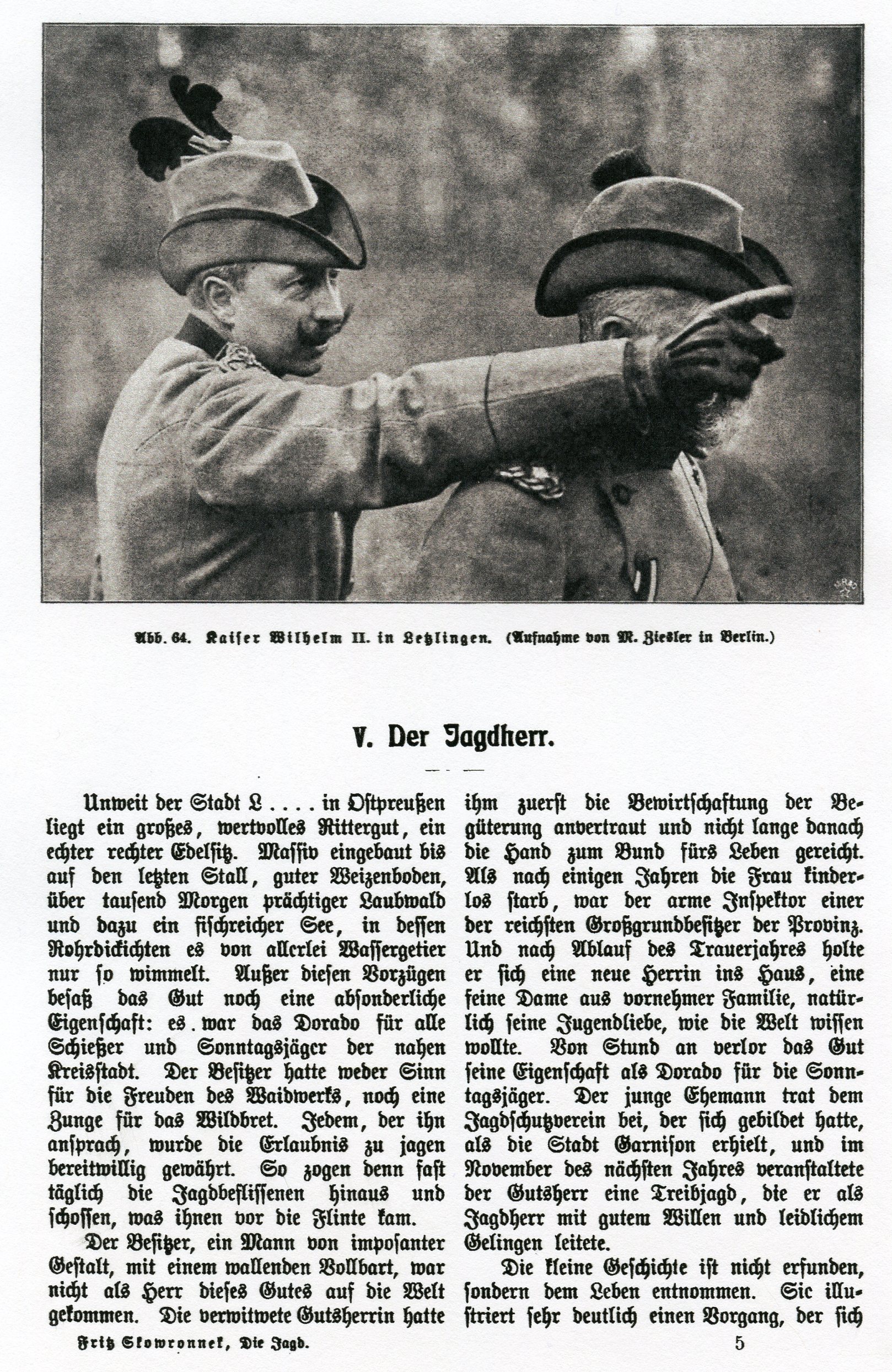
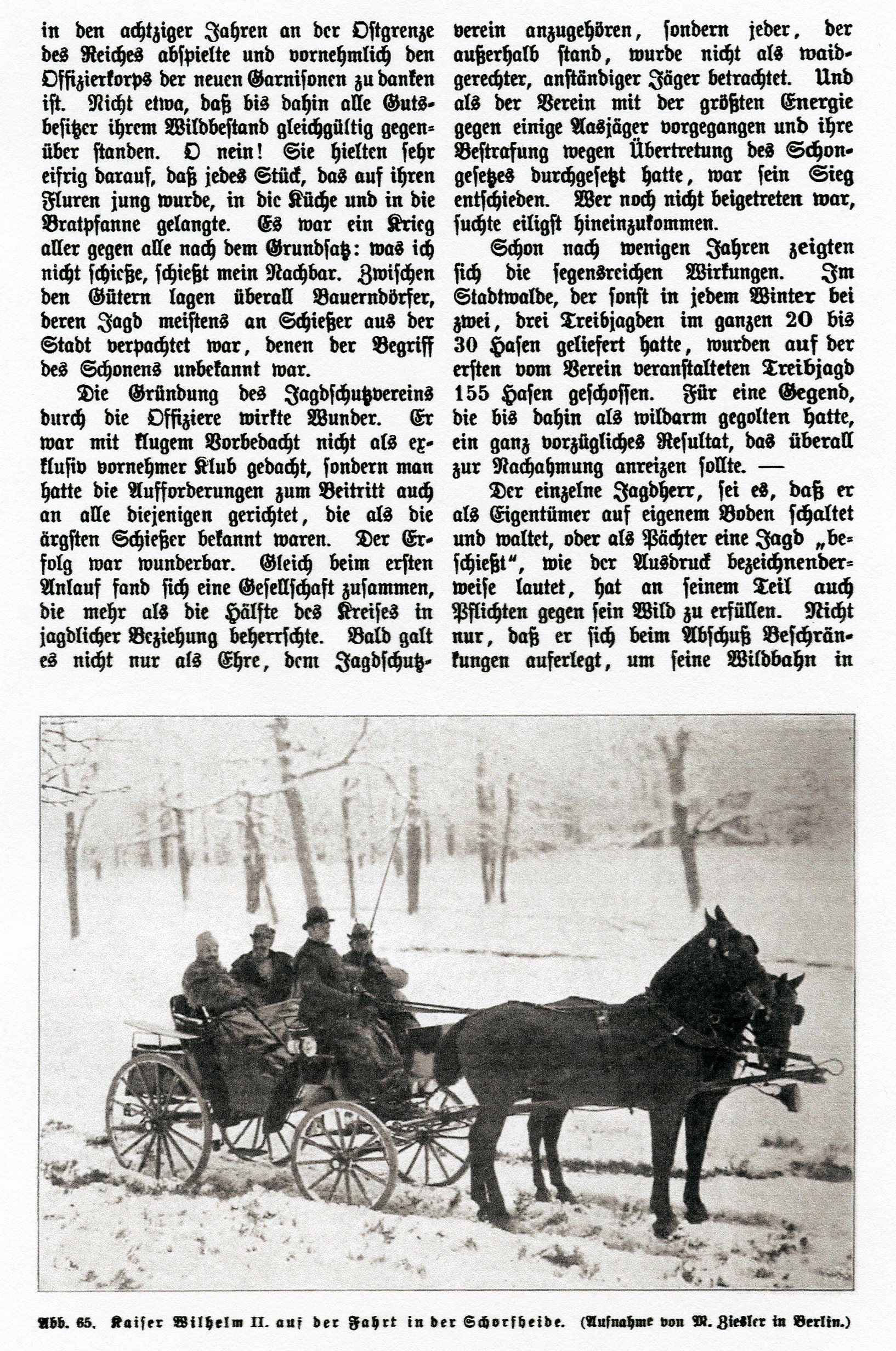
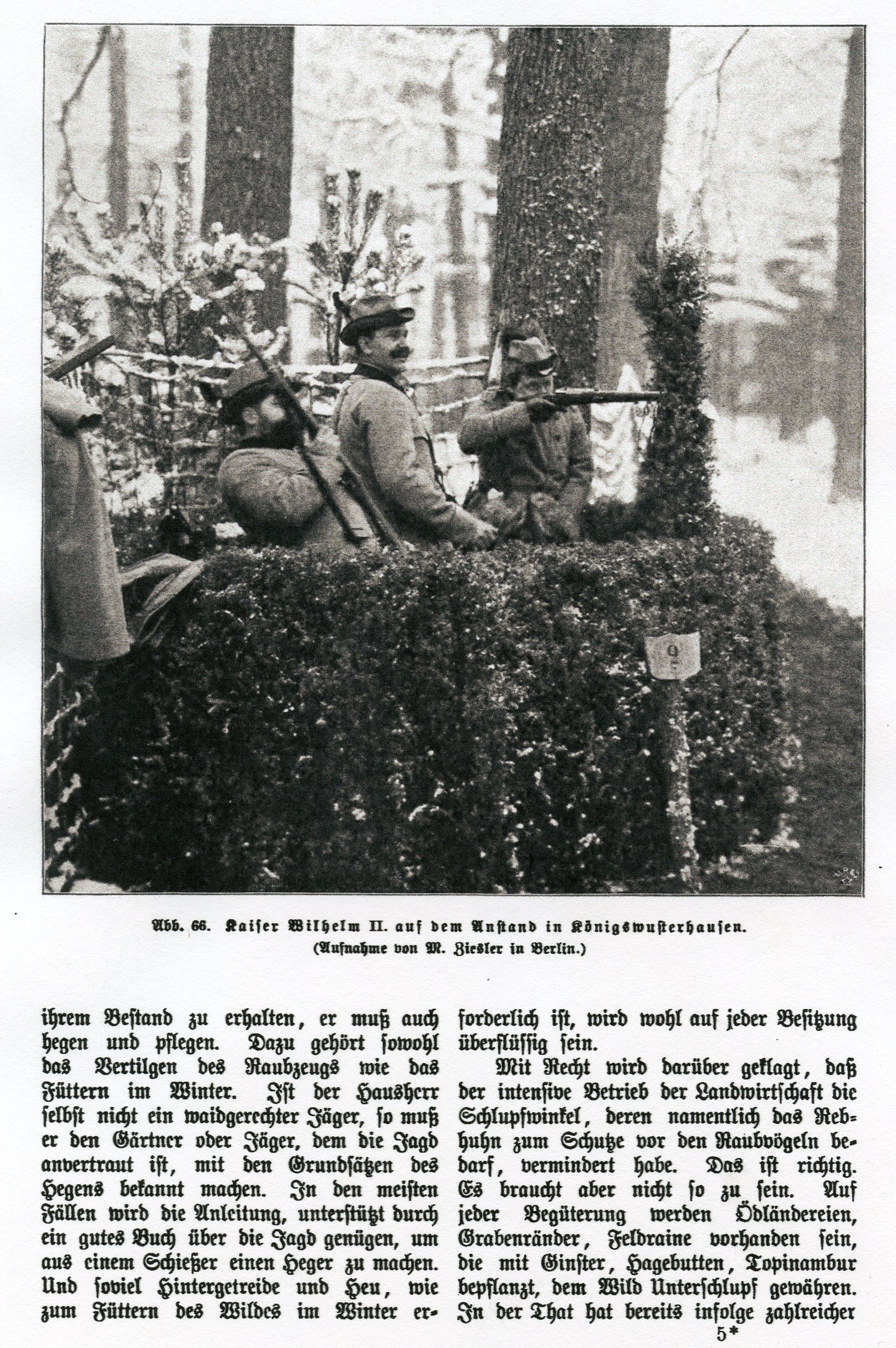
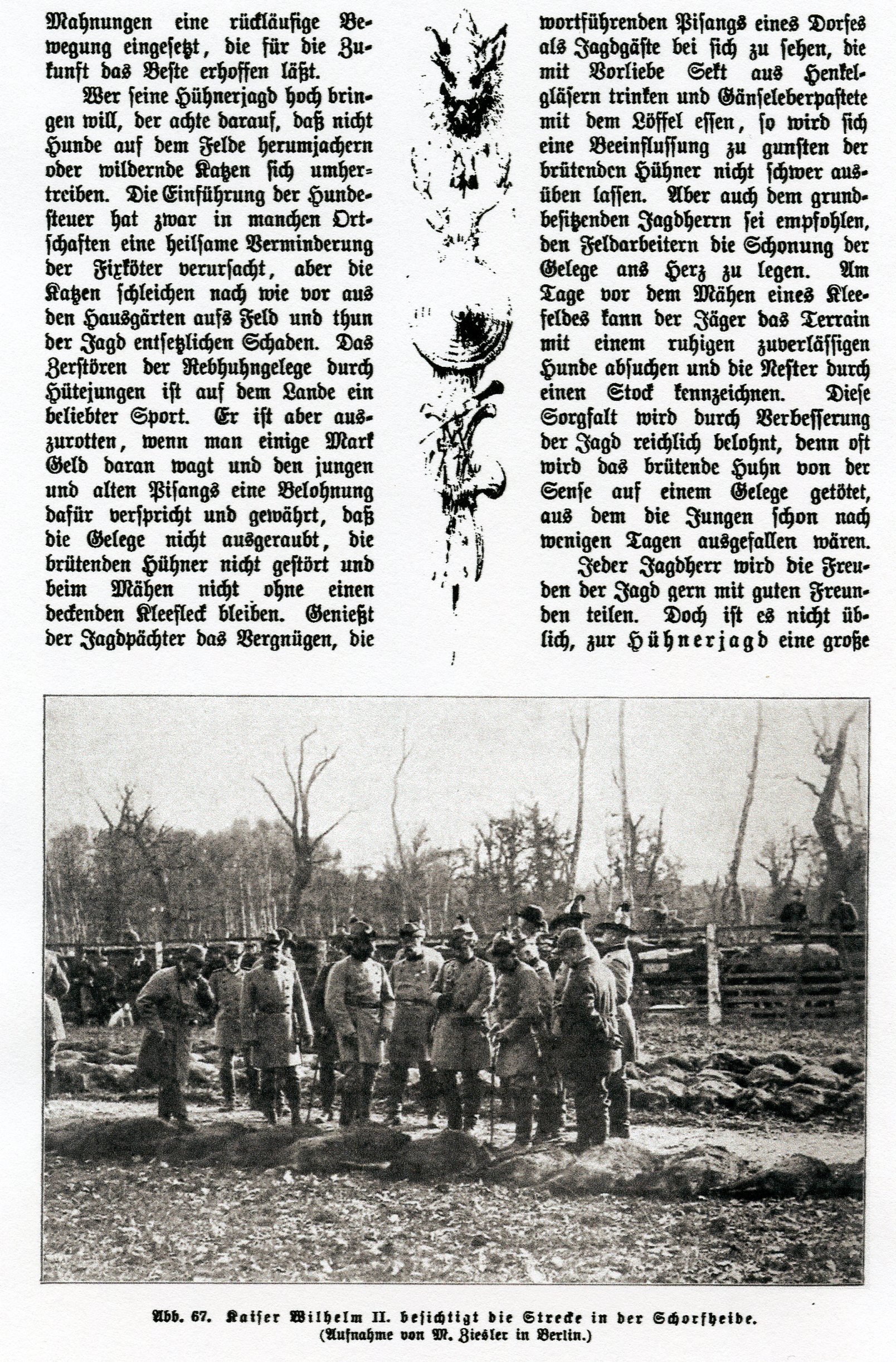
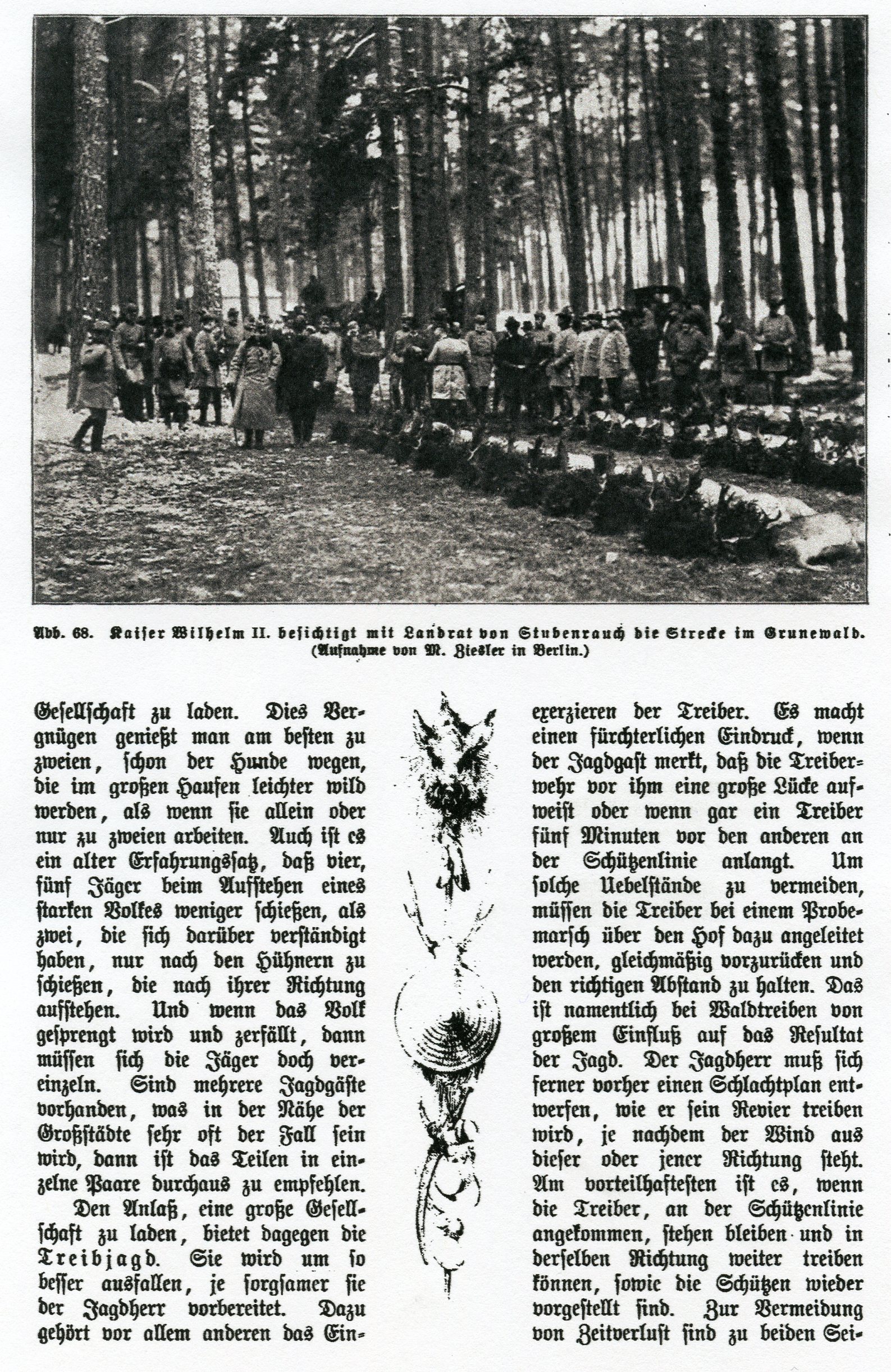
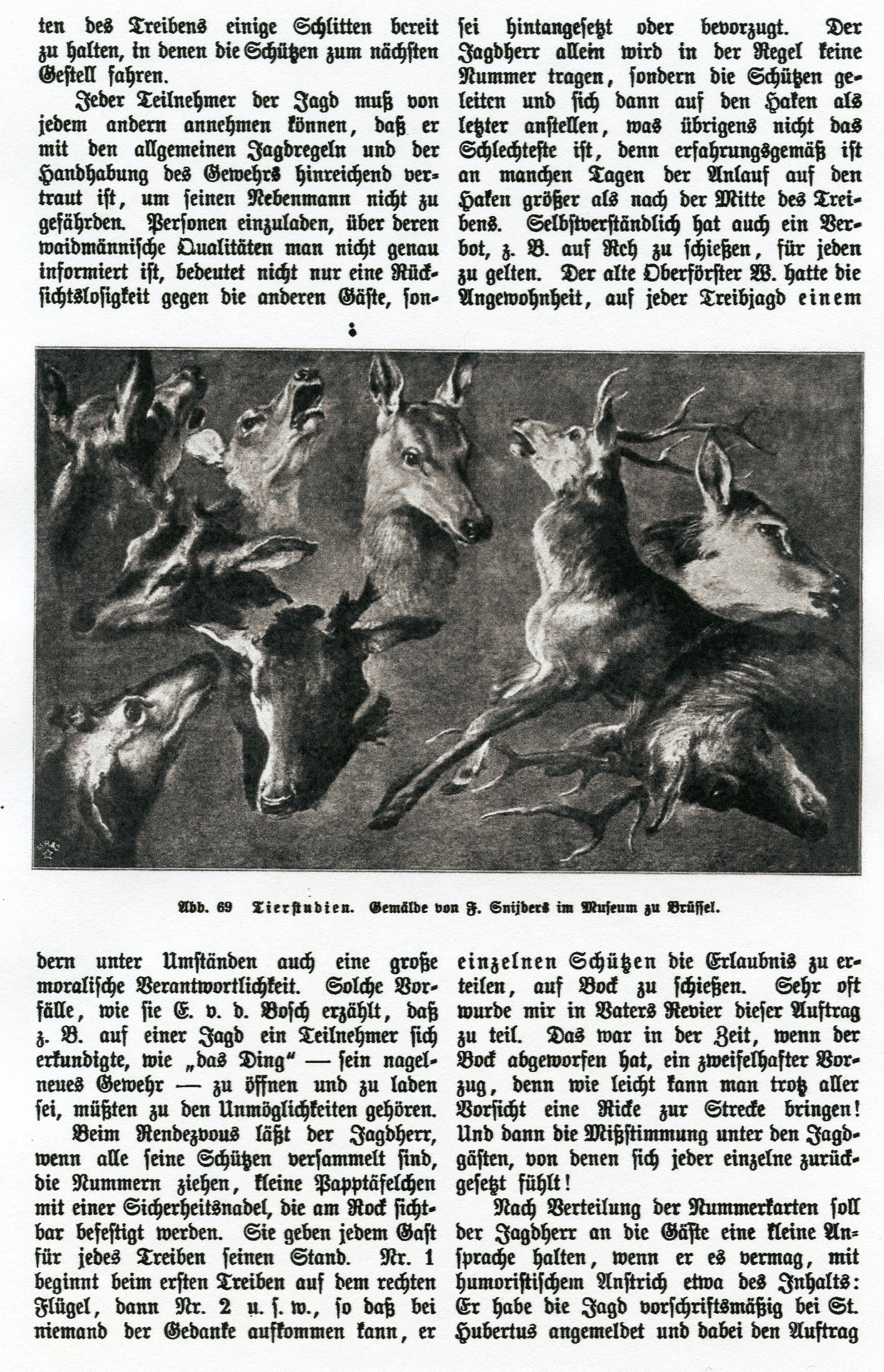
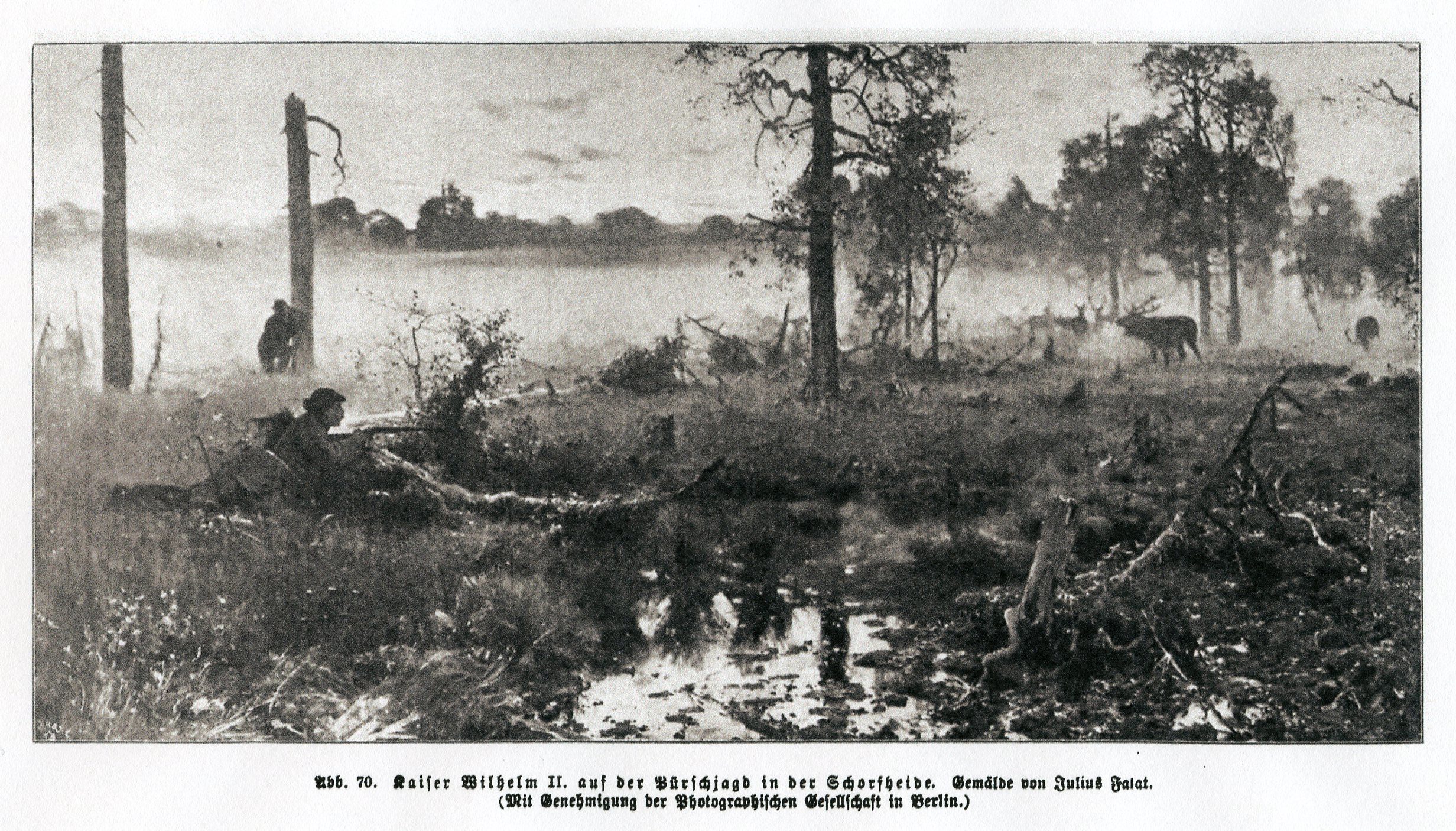
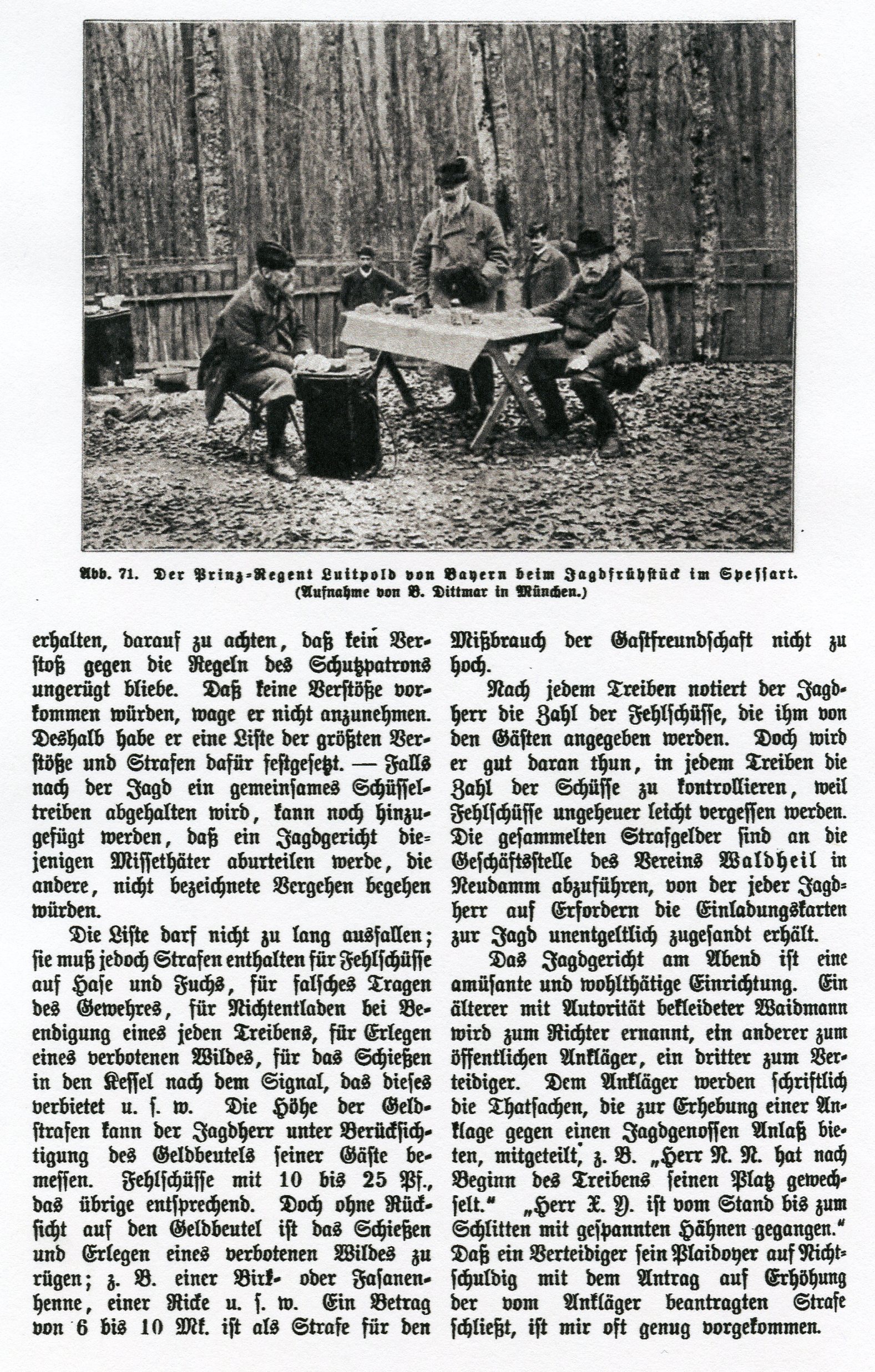
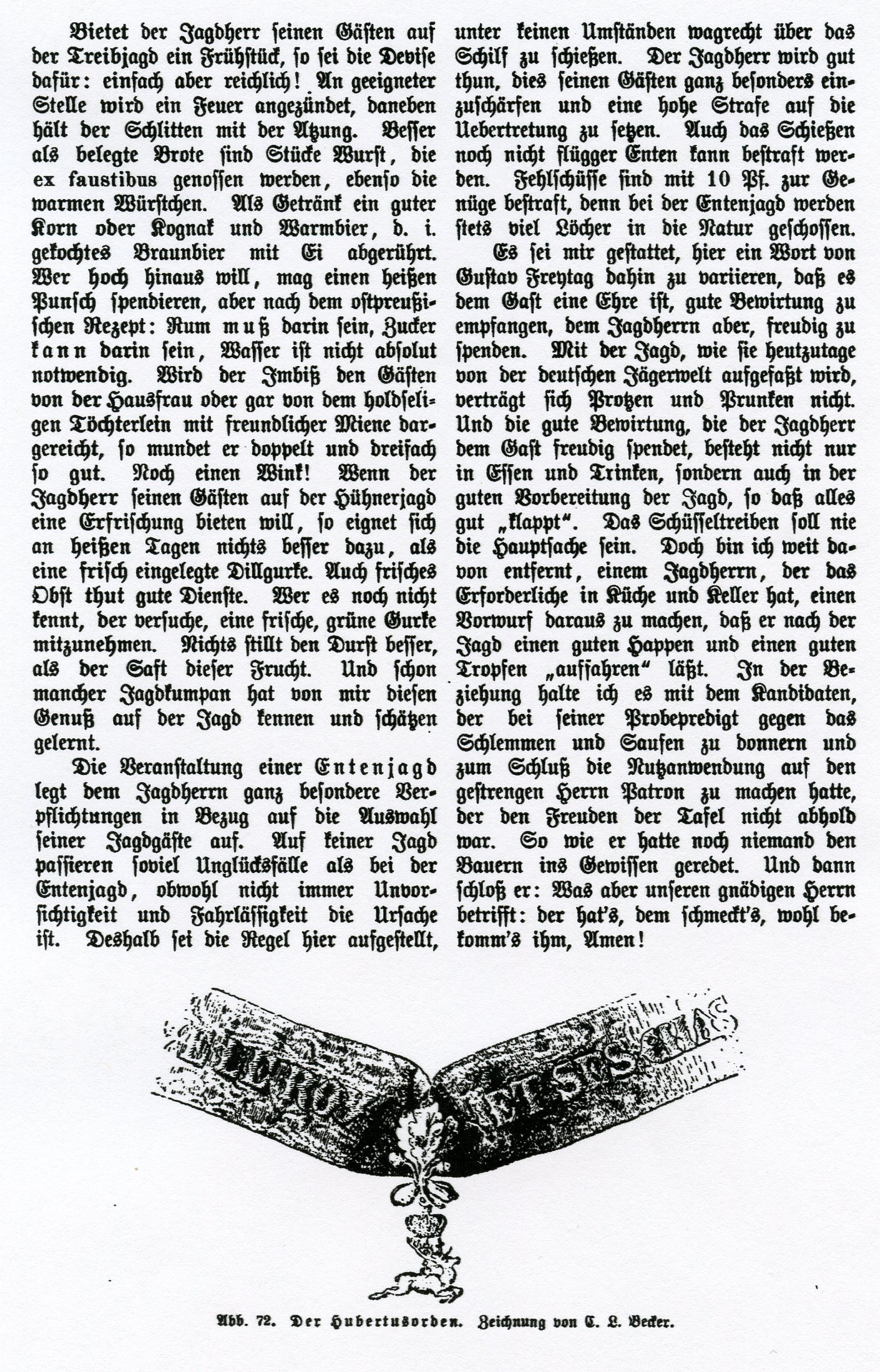
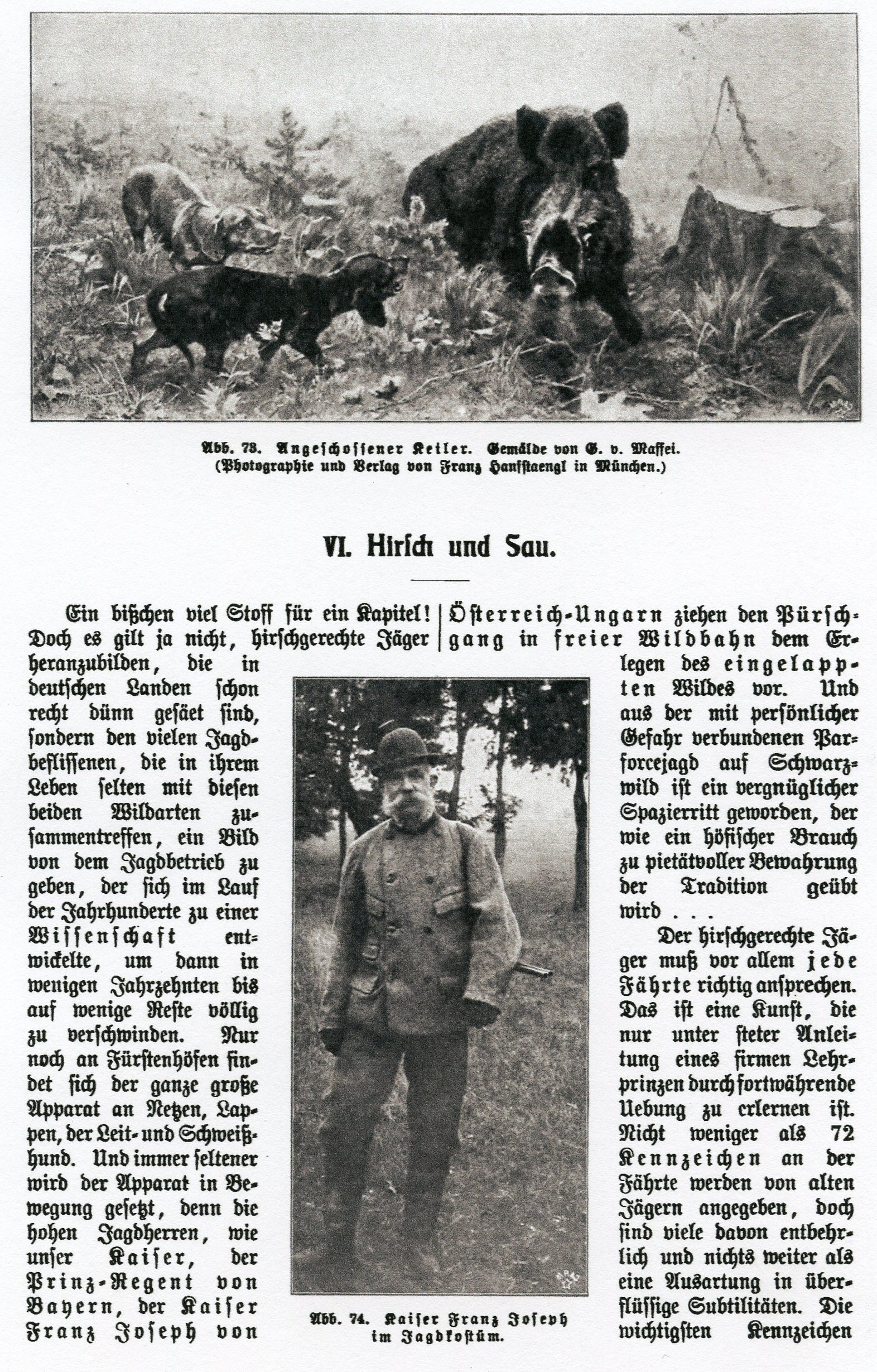
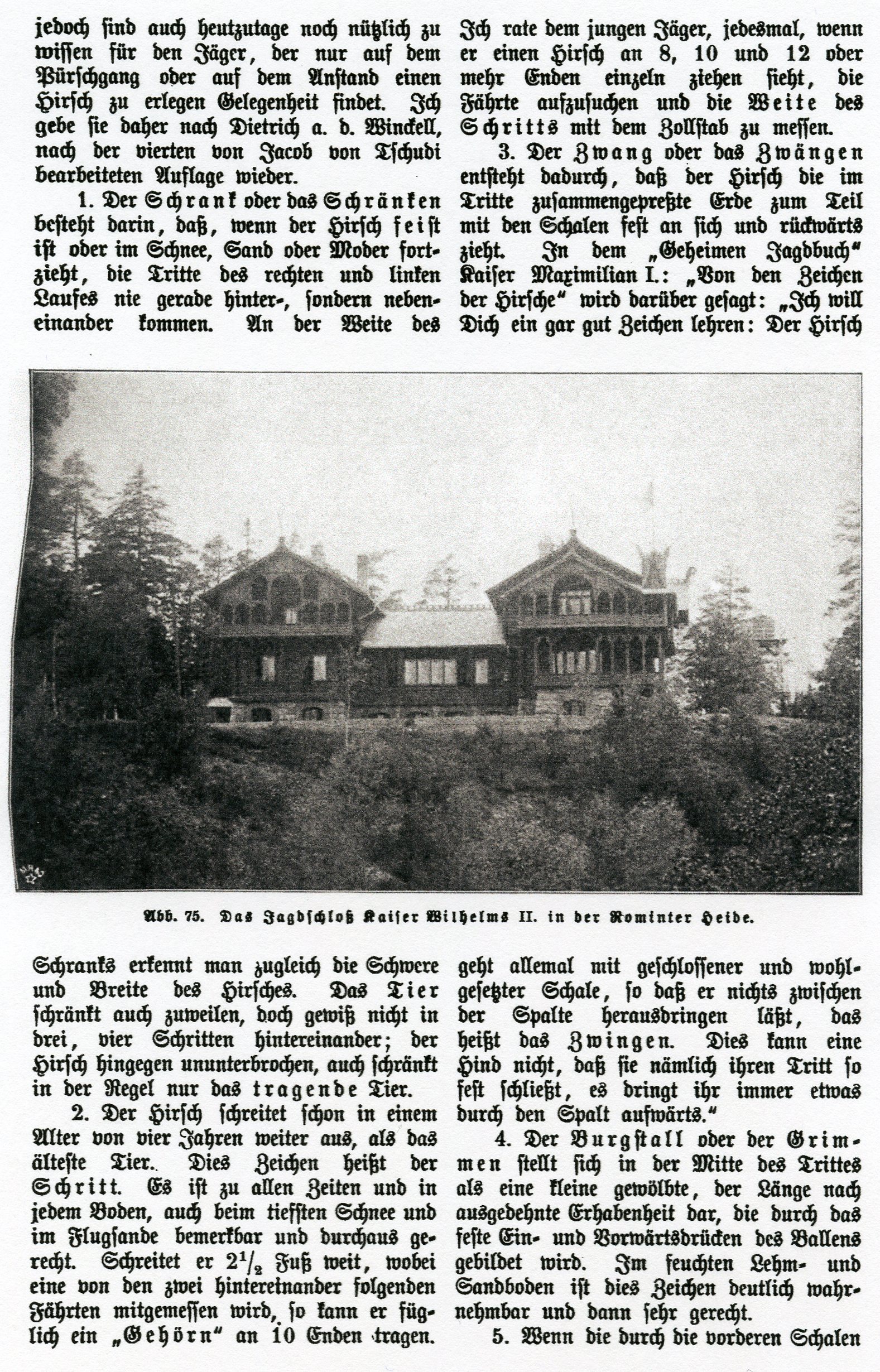
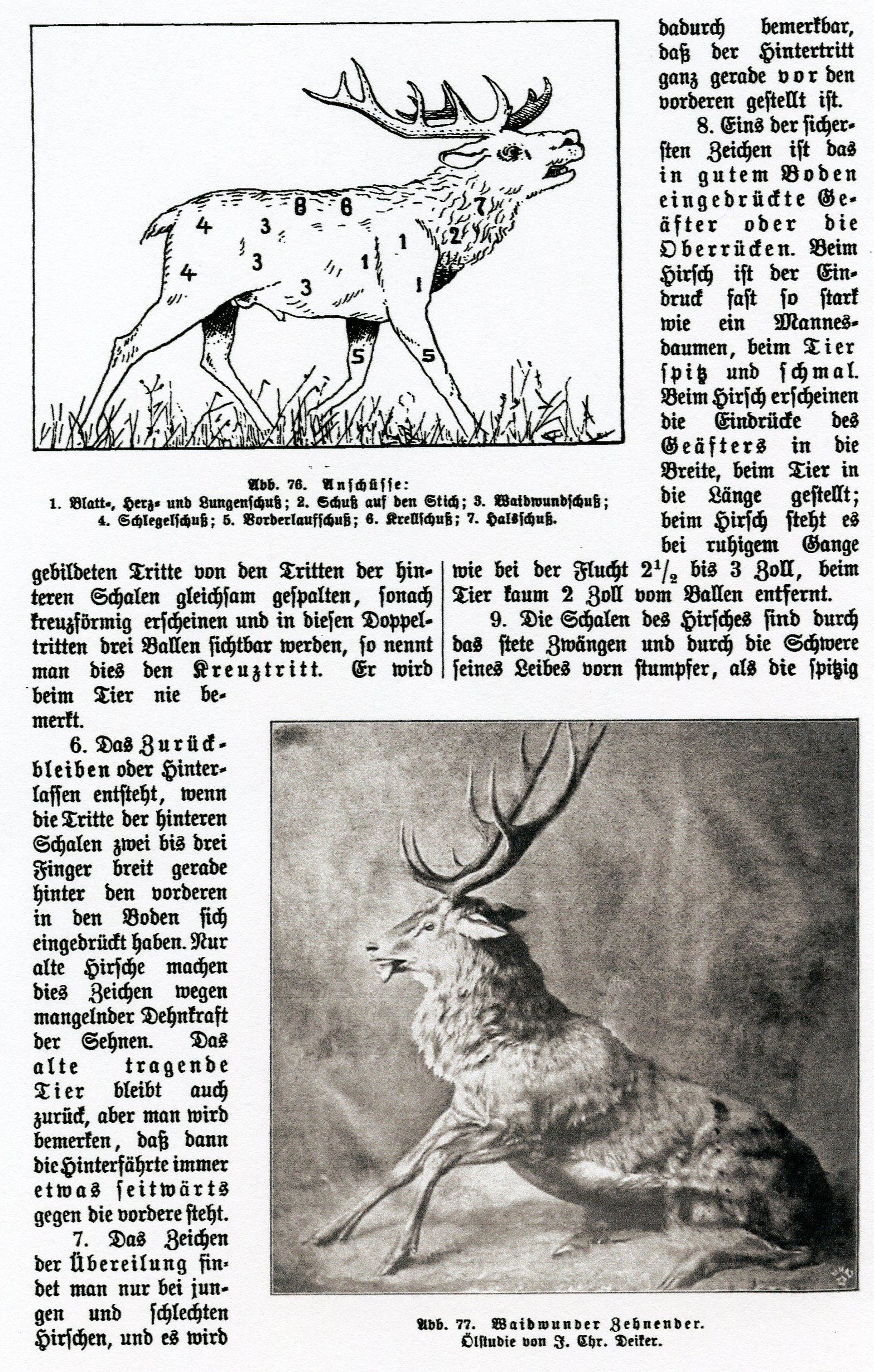
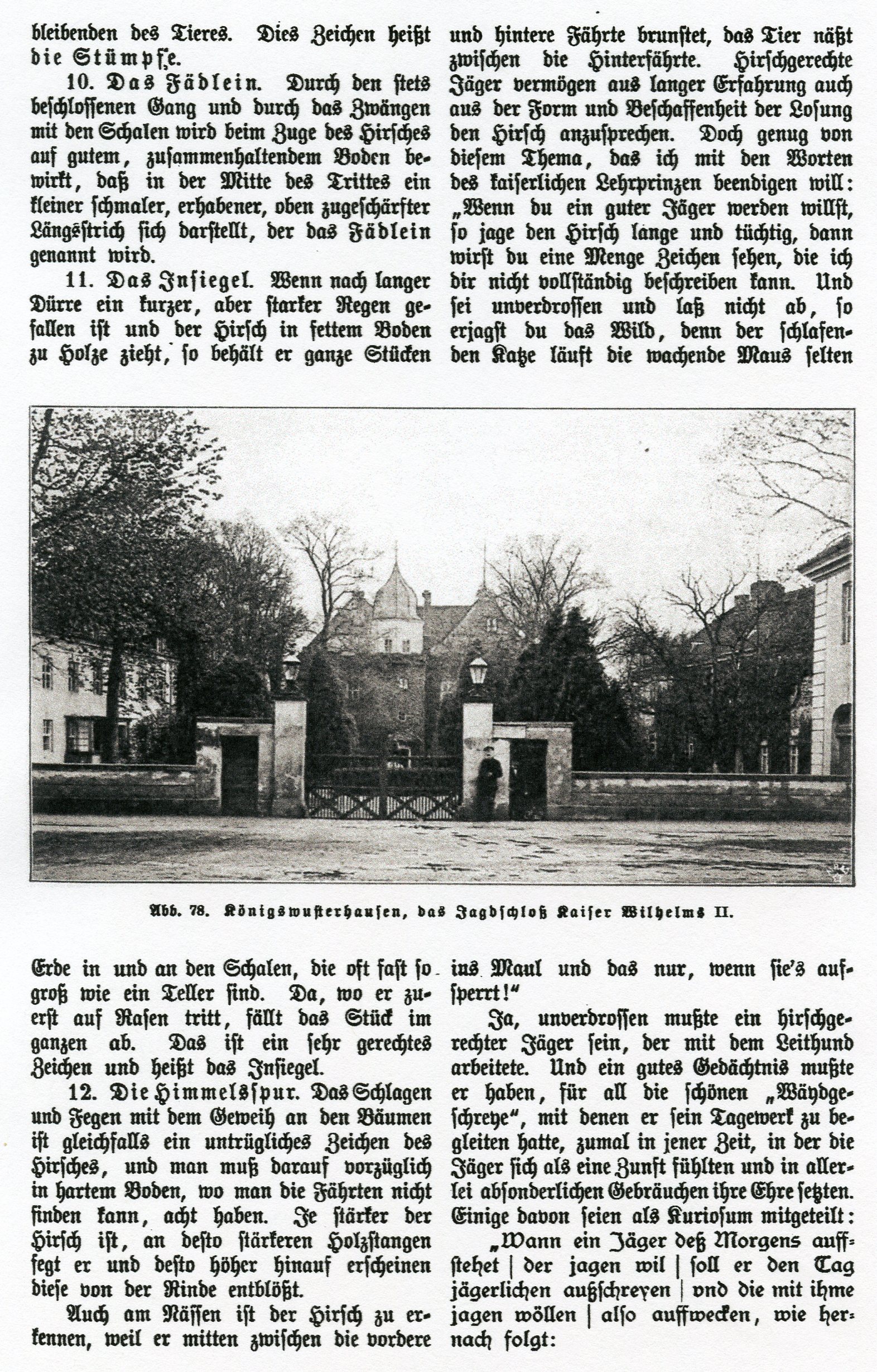
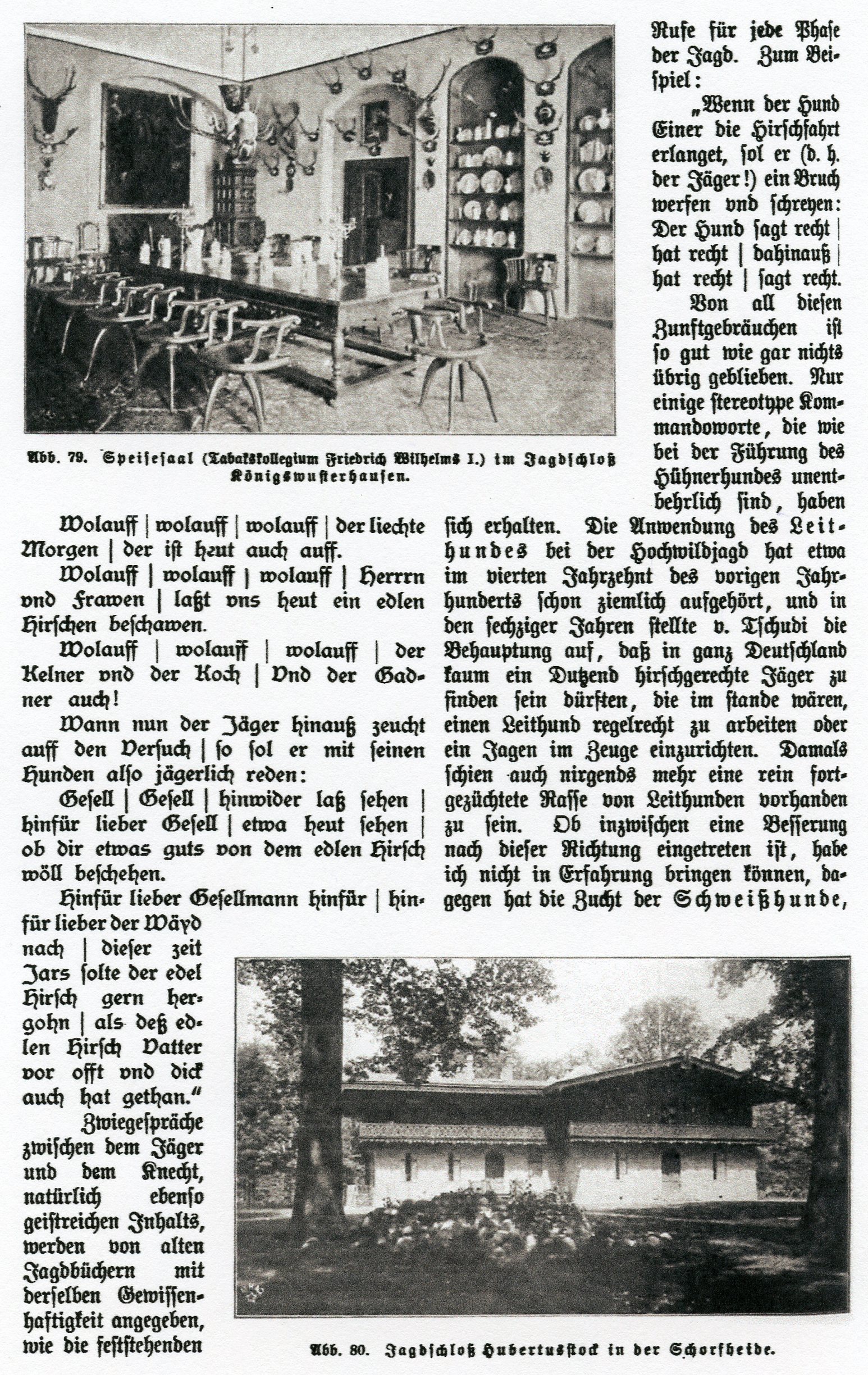
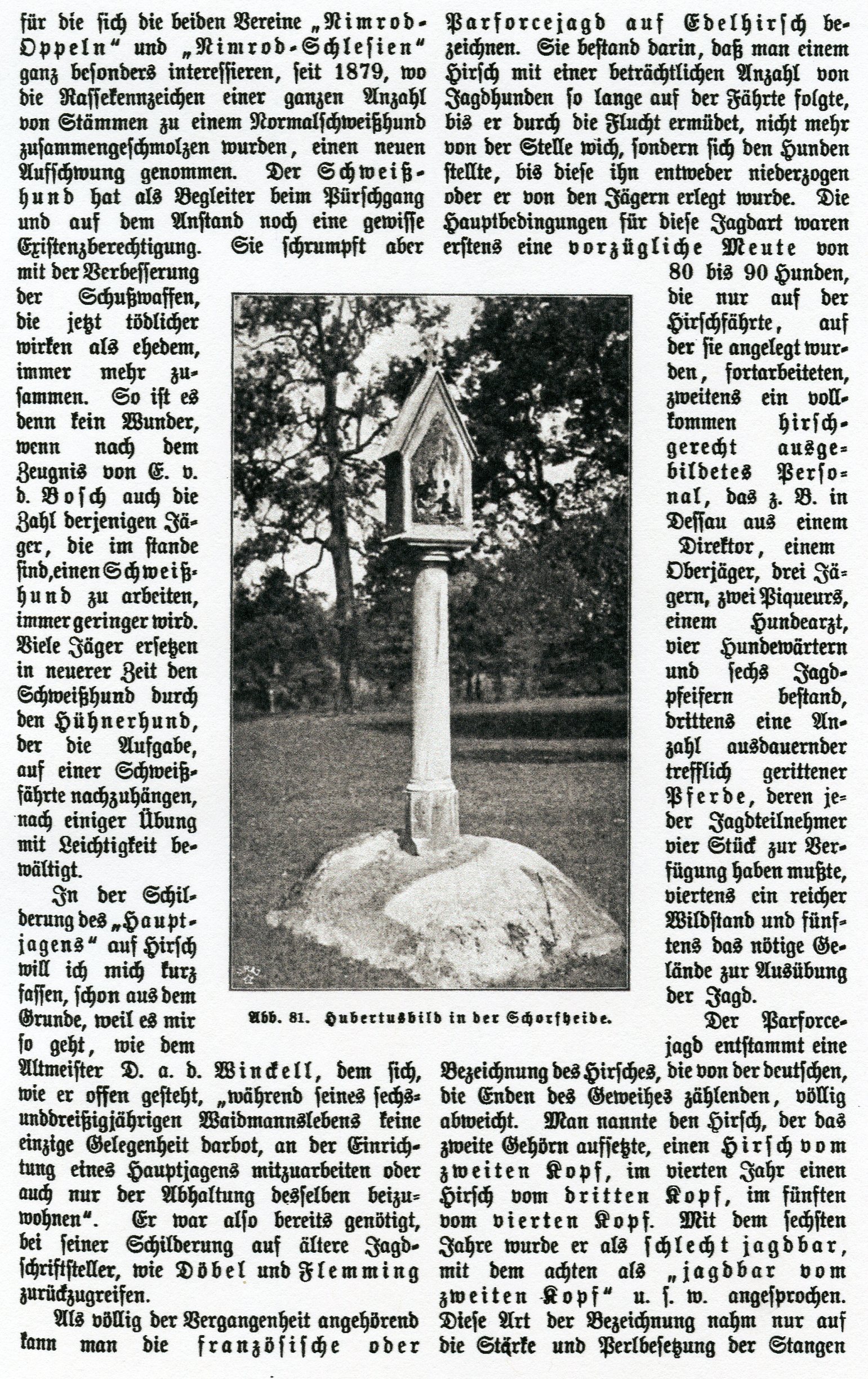
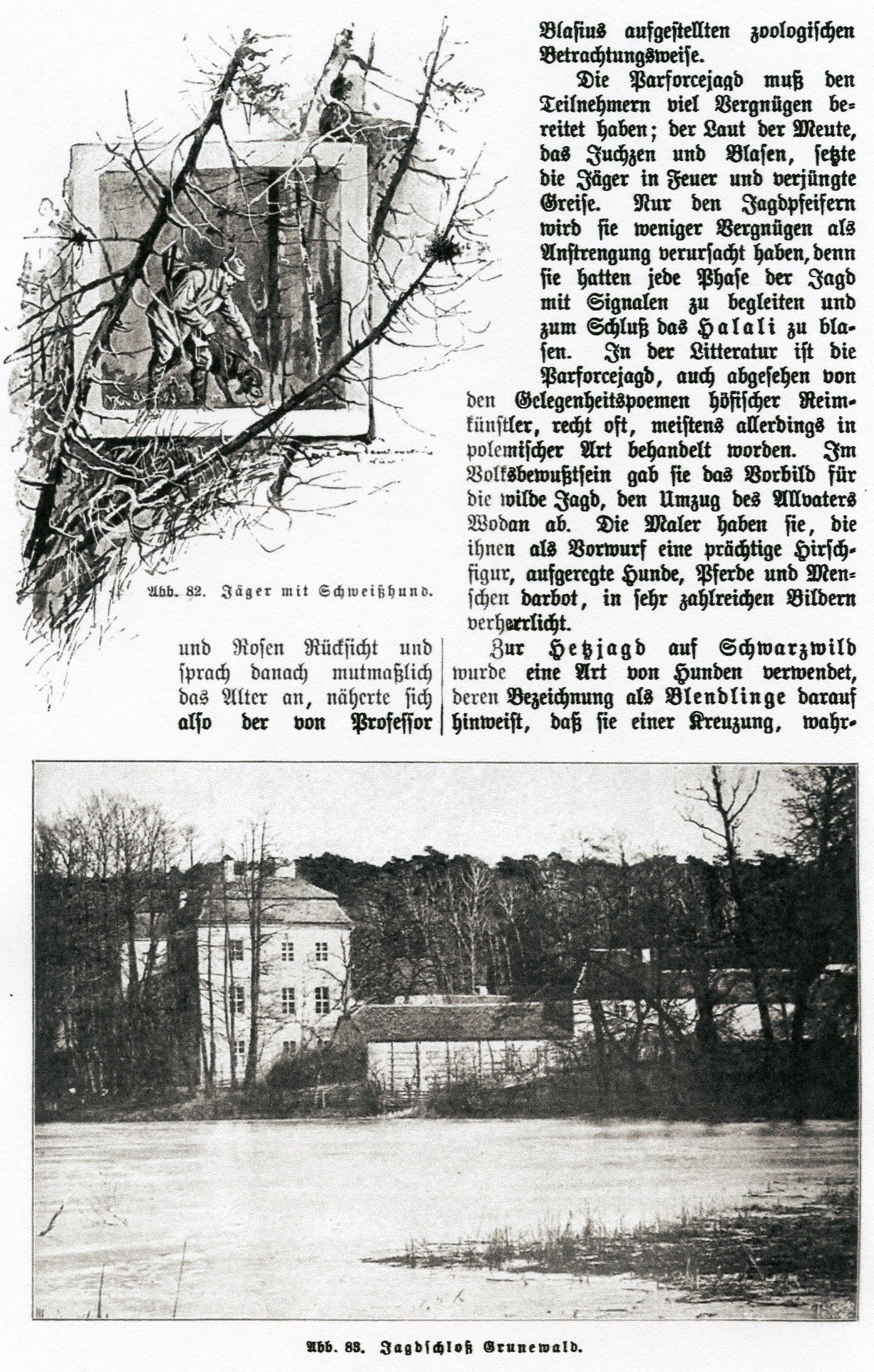
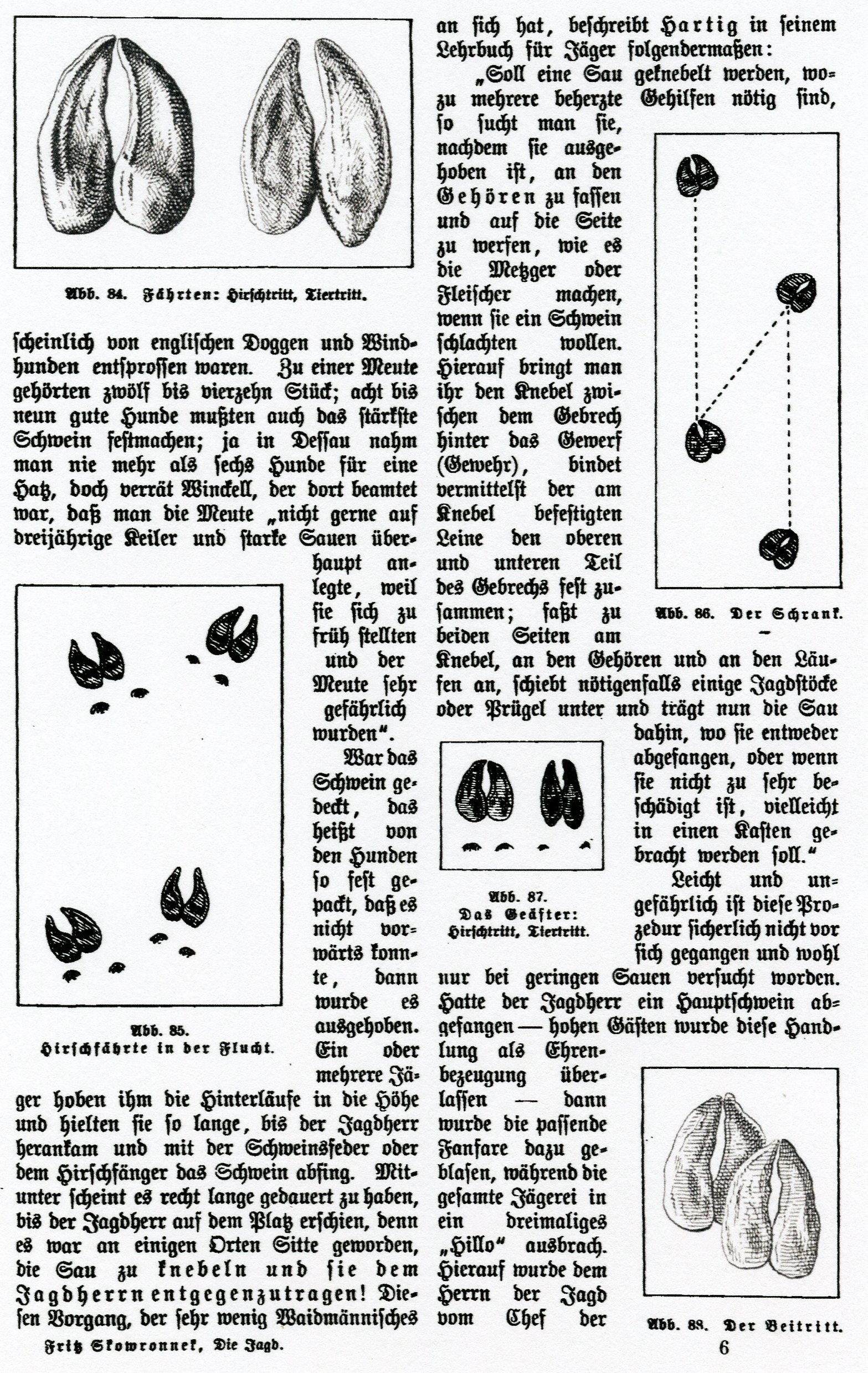
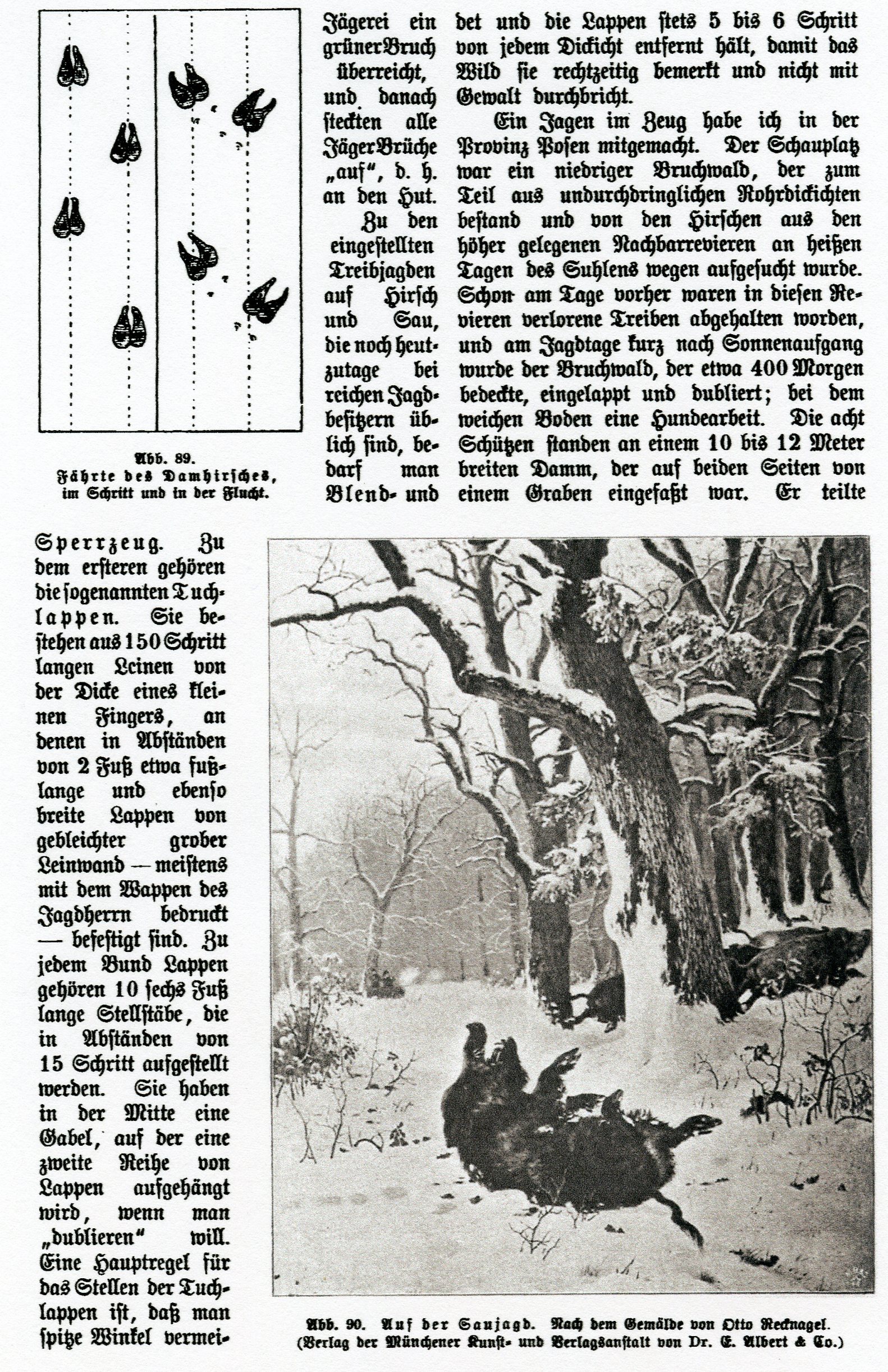
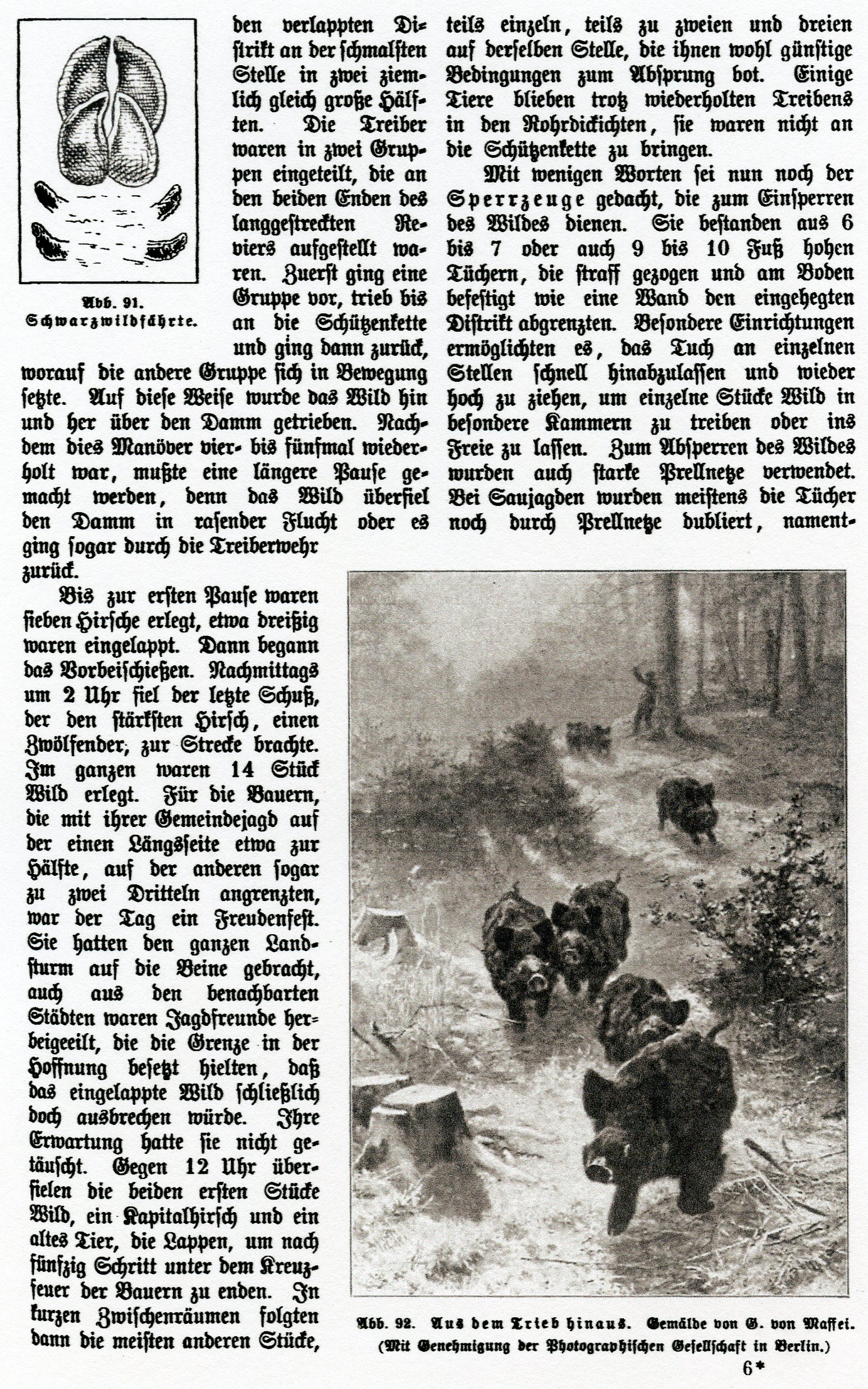
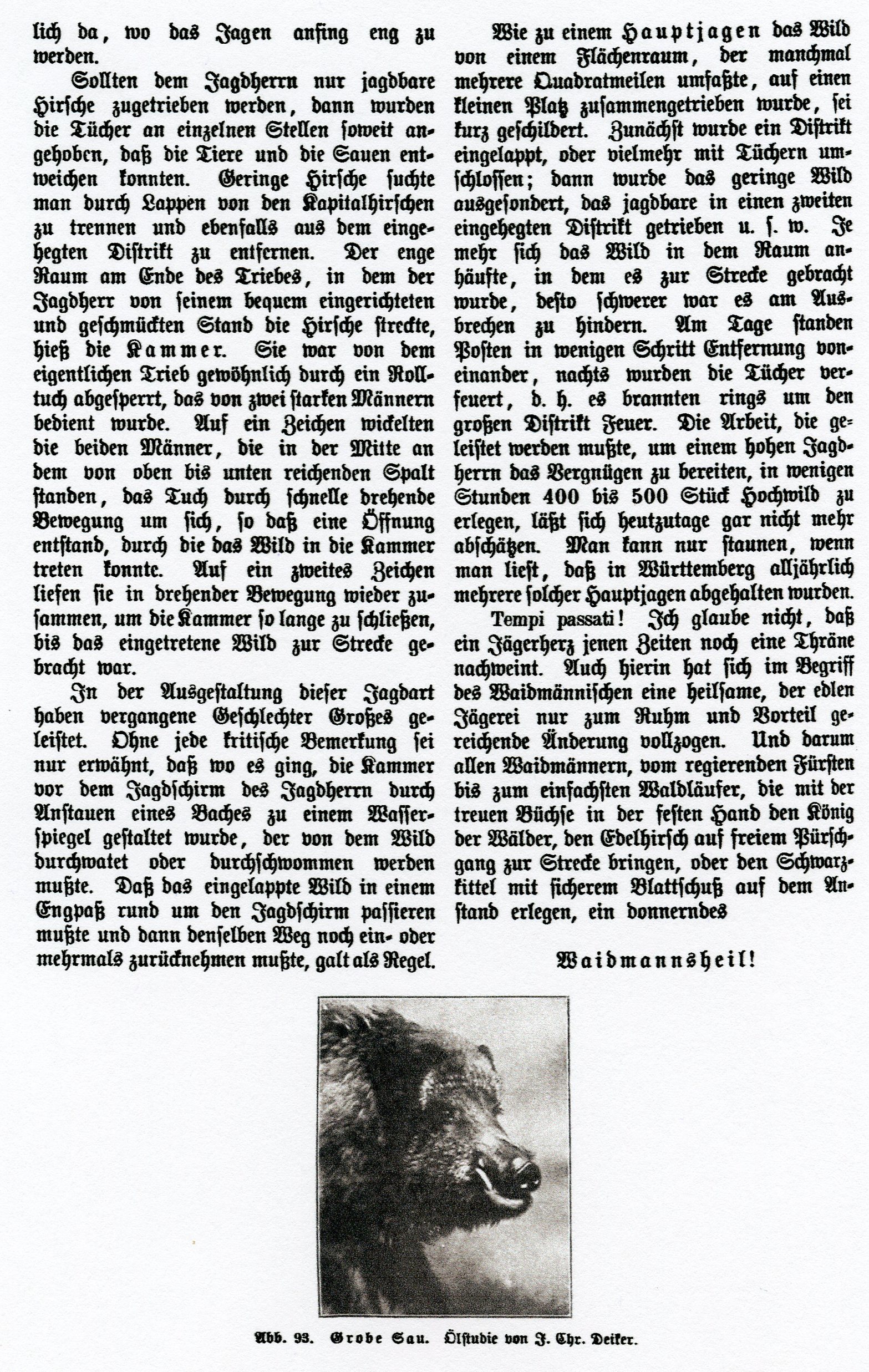
Following are several images of other Royal Hunters also shown in the book Die Jagd
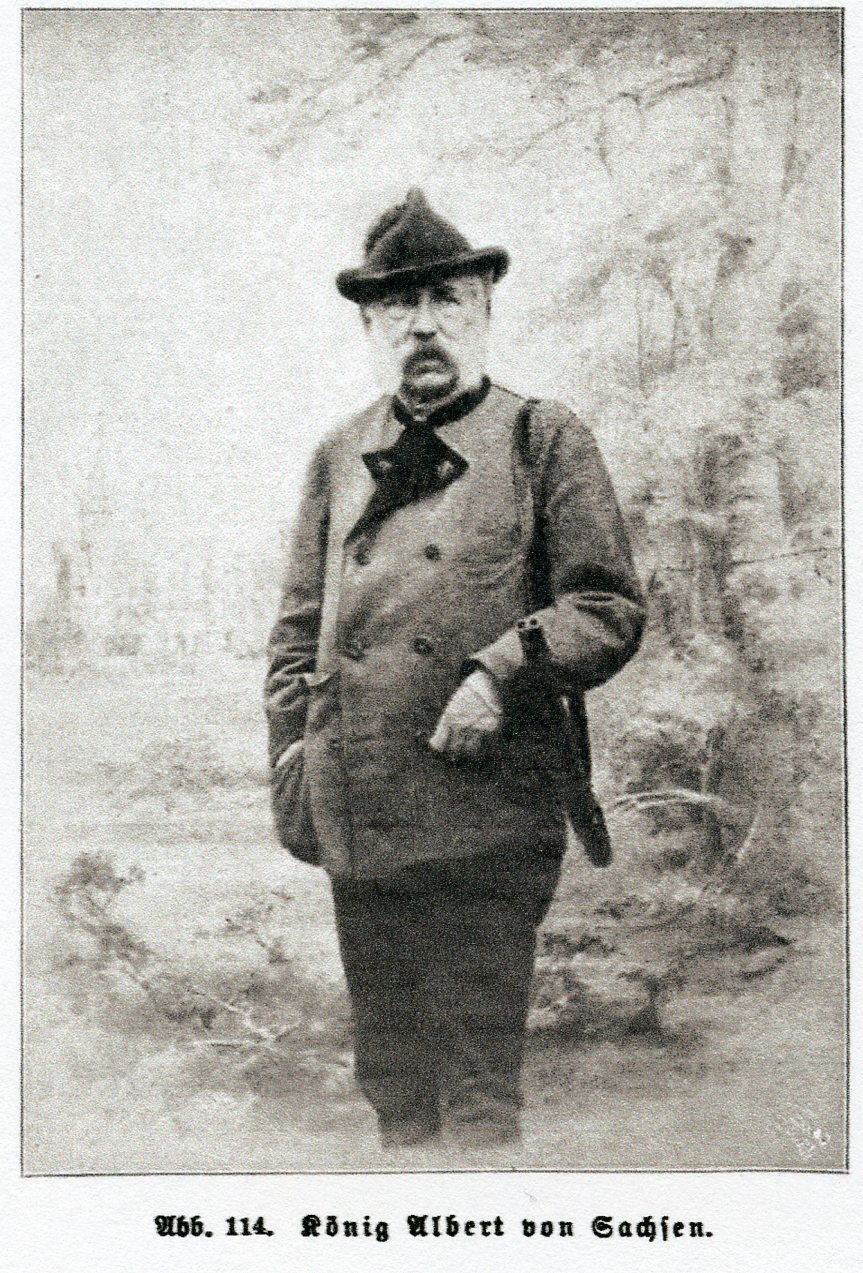
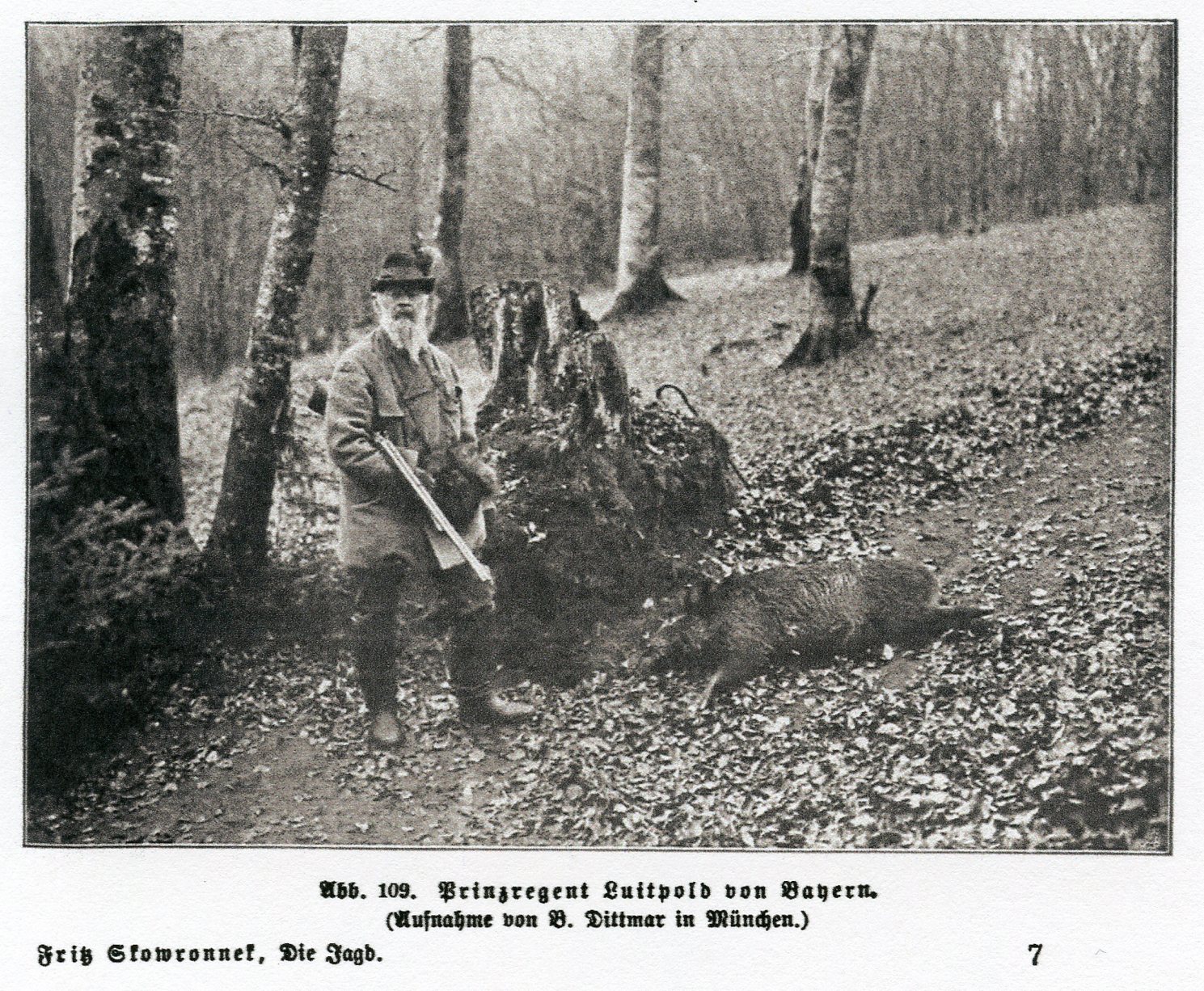
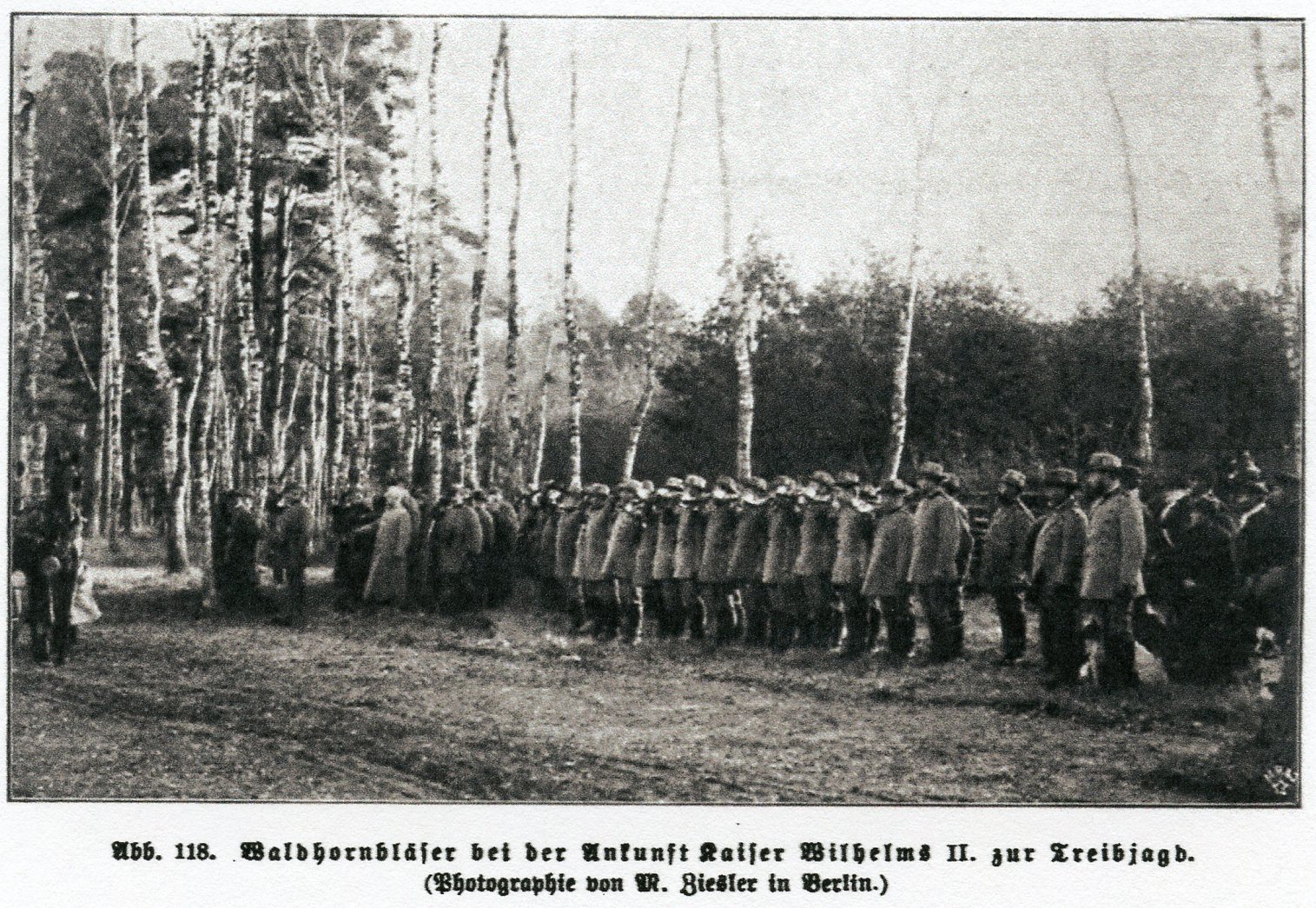
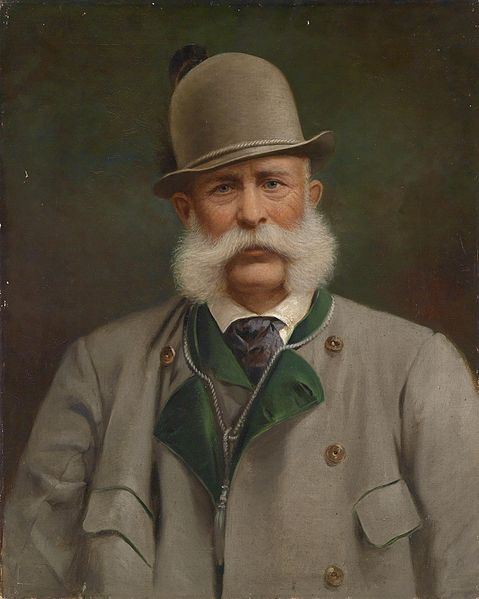
Another Royal Hunter was Herzog Ernst I. Von Sachsen- Altenburg. The book Deutsche Jagd und Deutsche Fürsten by Fritz Frenzel published in 1905 chronicals the history of the royal hunters of Thuringia and Saxony. It has a chapter which describes the hunts which took place in 1891, 1900 and 1904 at Ernst’s hunting lodge Hummelshain with Kaiser Wilhelm II. The following are images from that book.
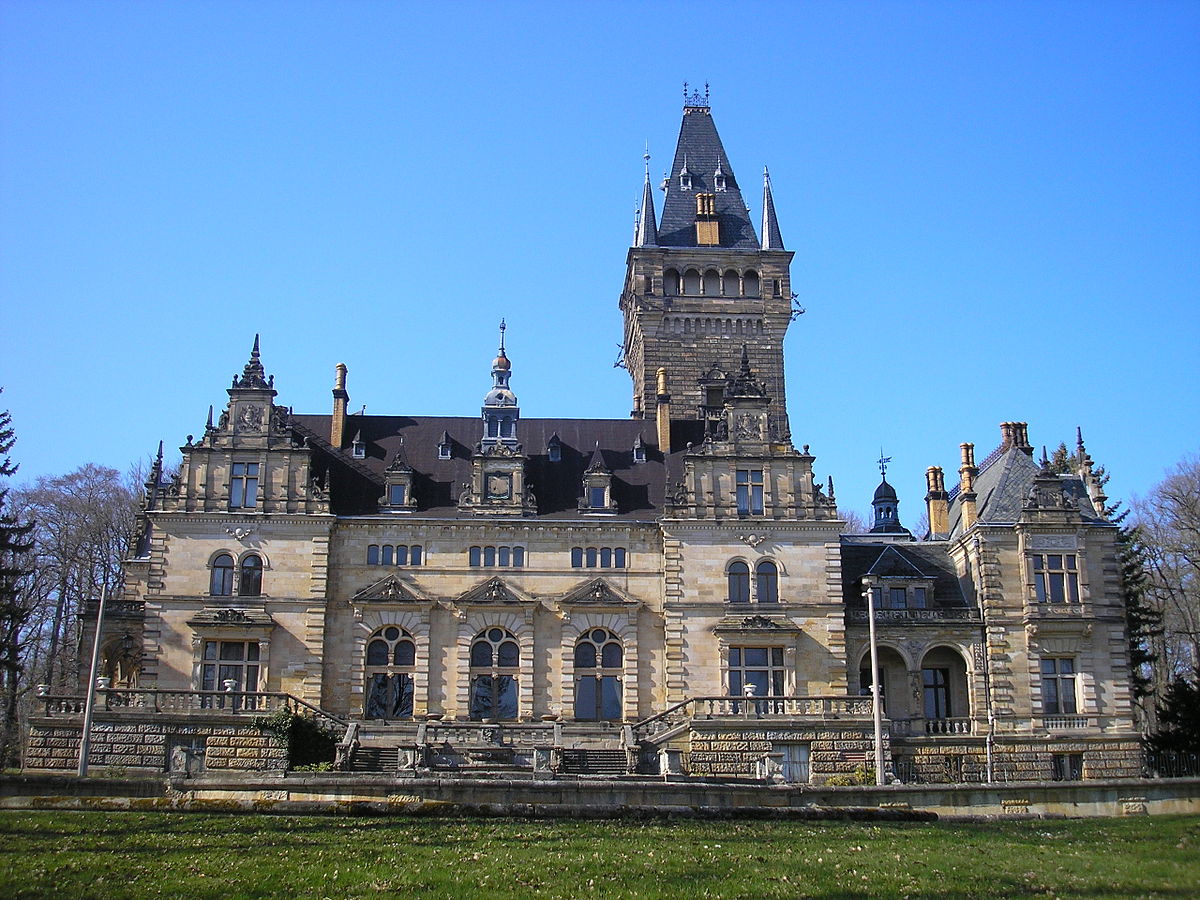
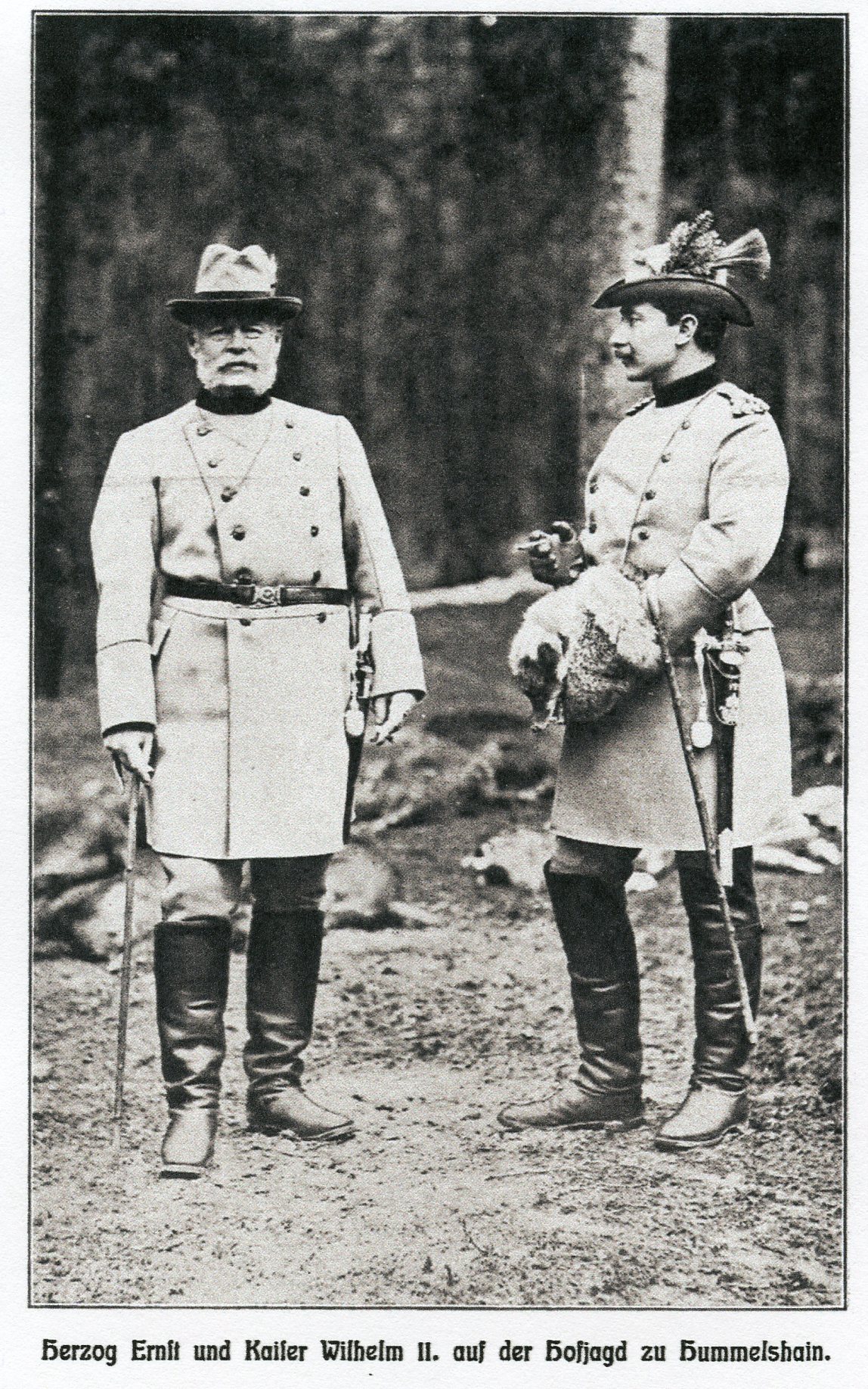
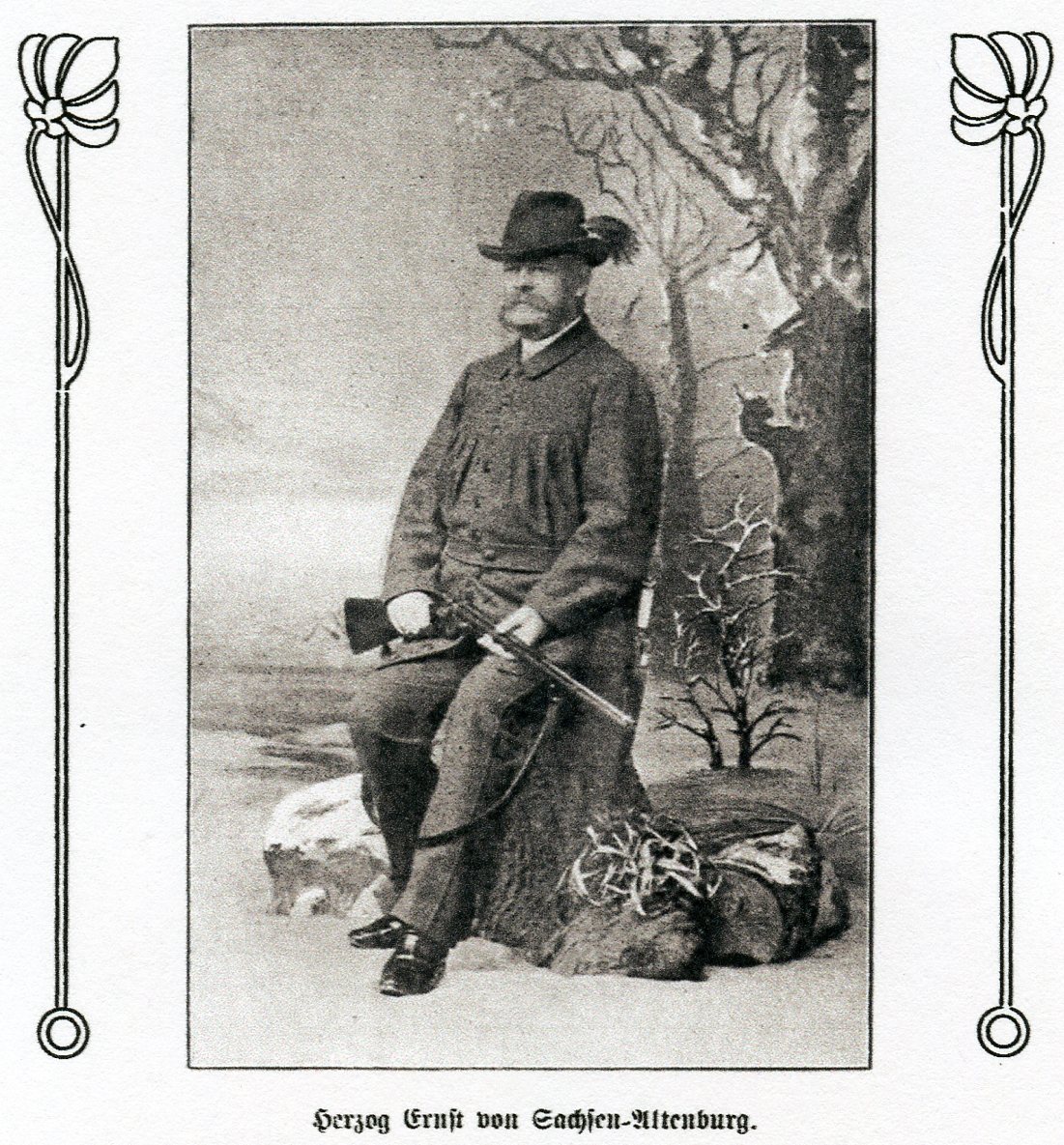
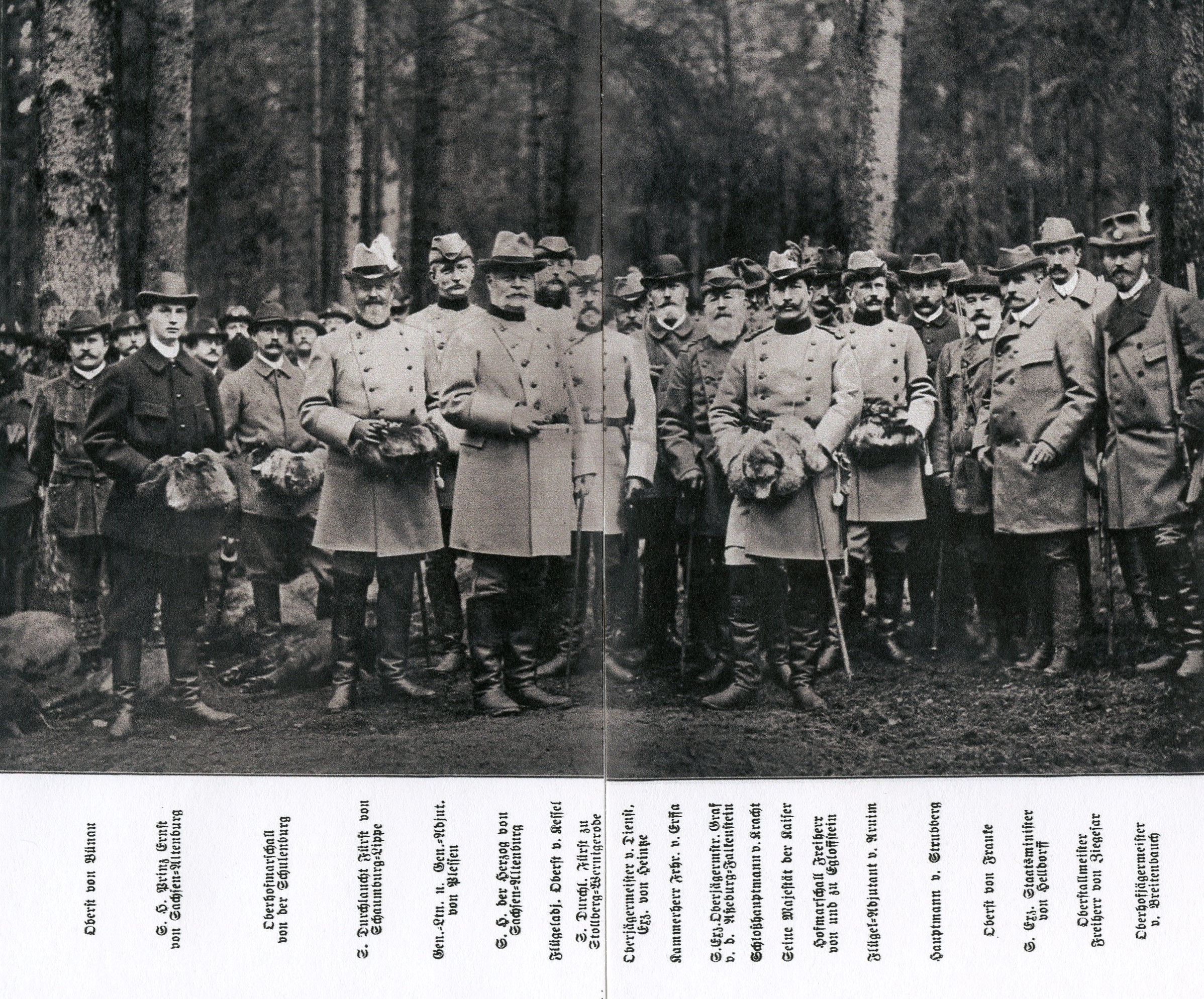
Below are two vintage post cards of the Hummelshain hunting lodge.


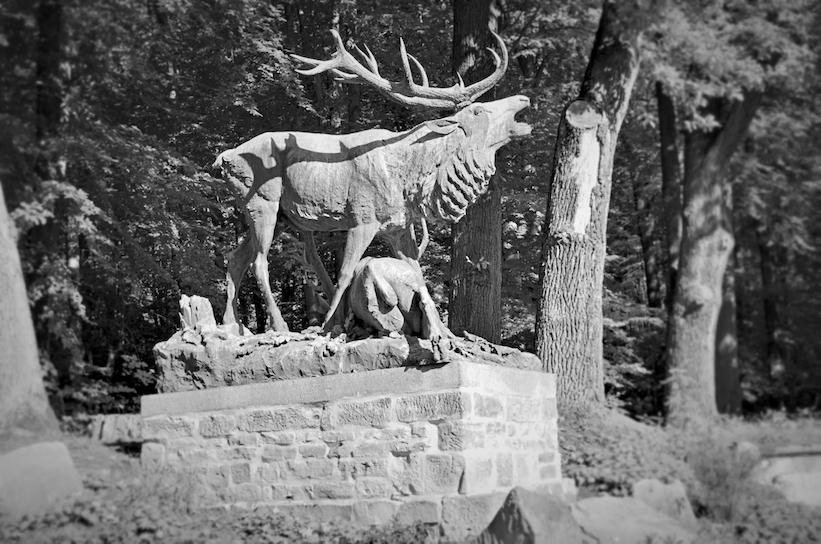
Not every Royal hunt went according to plan. The Author Marguerite Cunliffe-Owen in her book The Martyrdom of an Empress relates a hunt by Archduke Albrecht, Duke of Teschen which had a humerous ending. The following is her story about that hunt.
